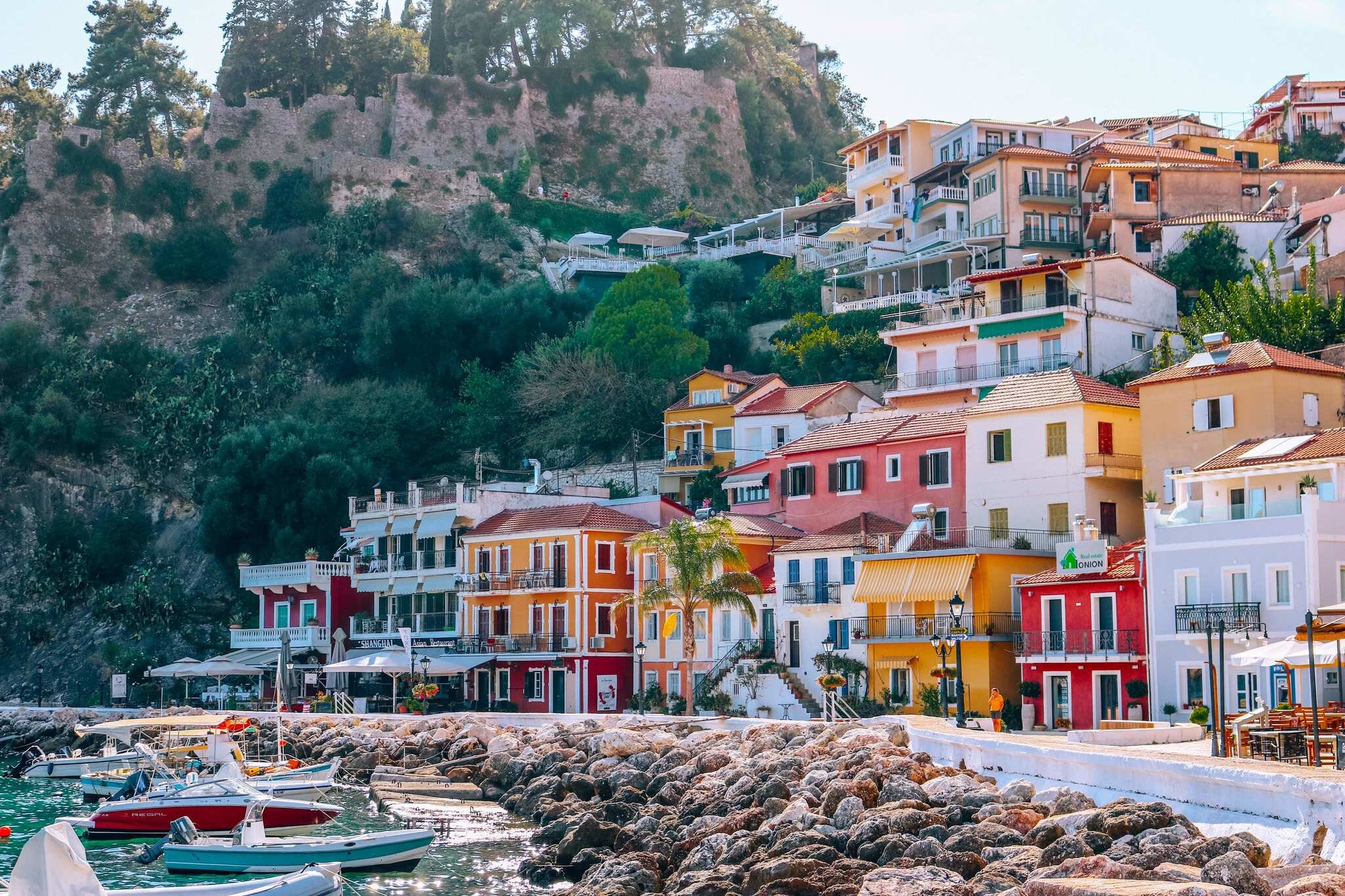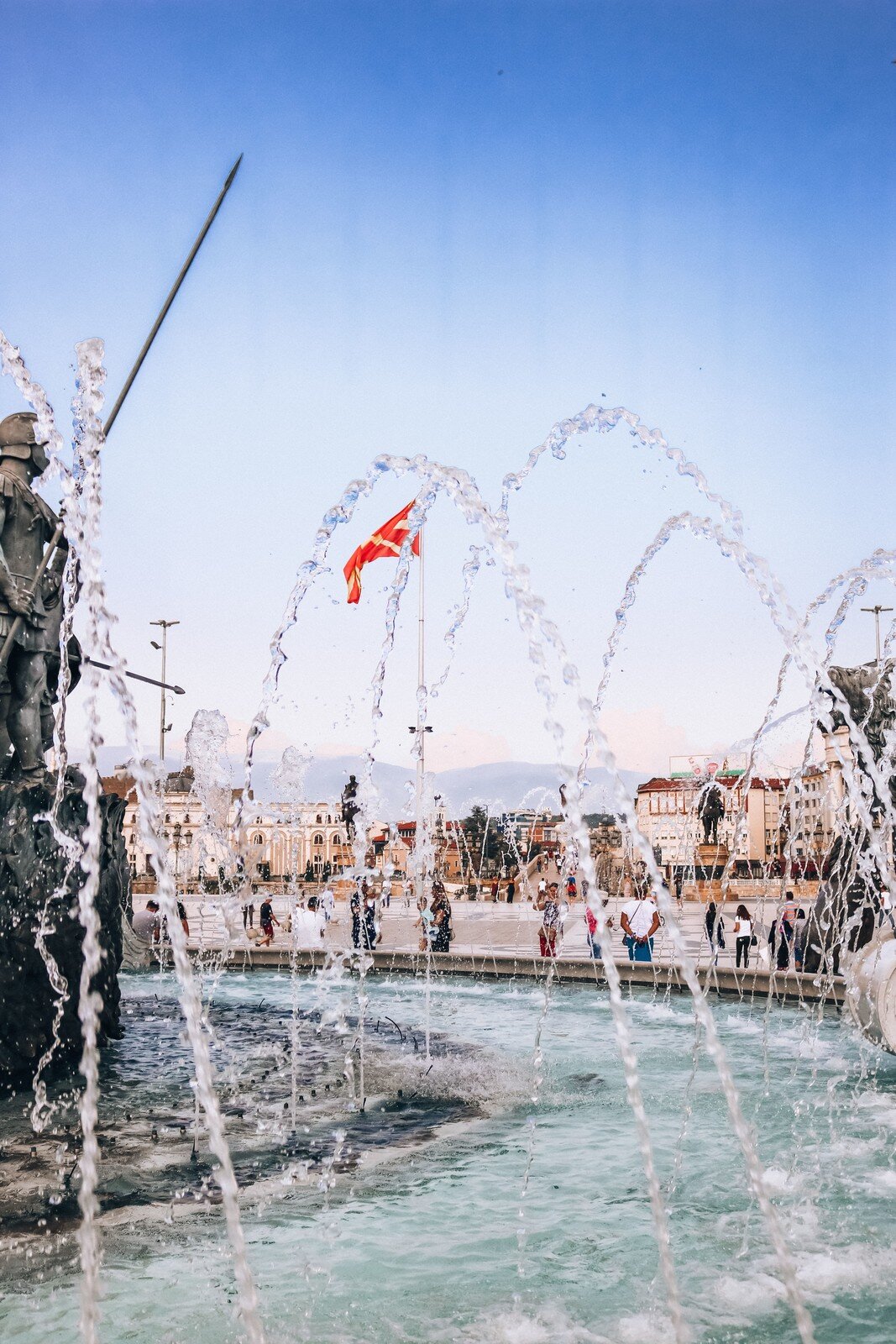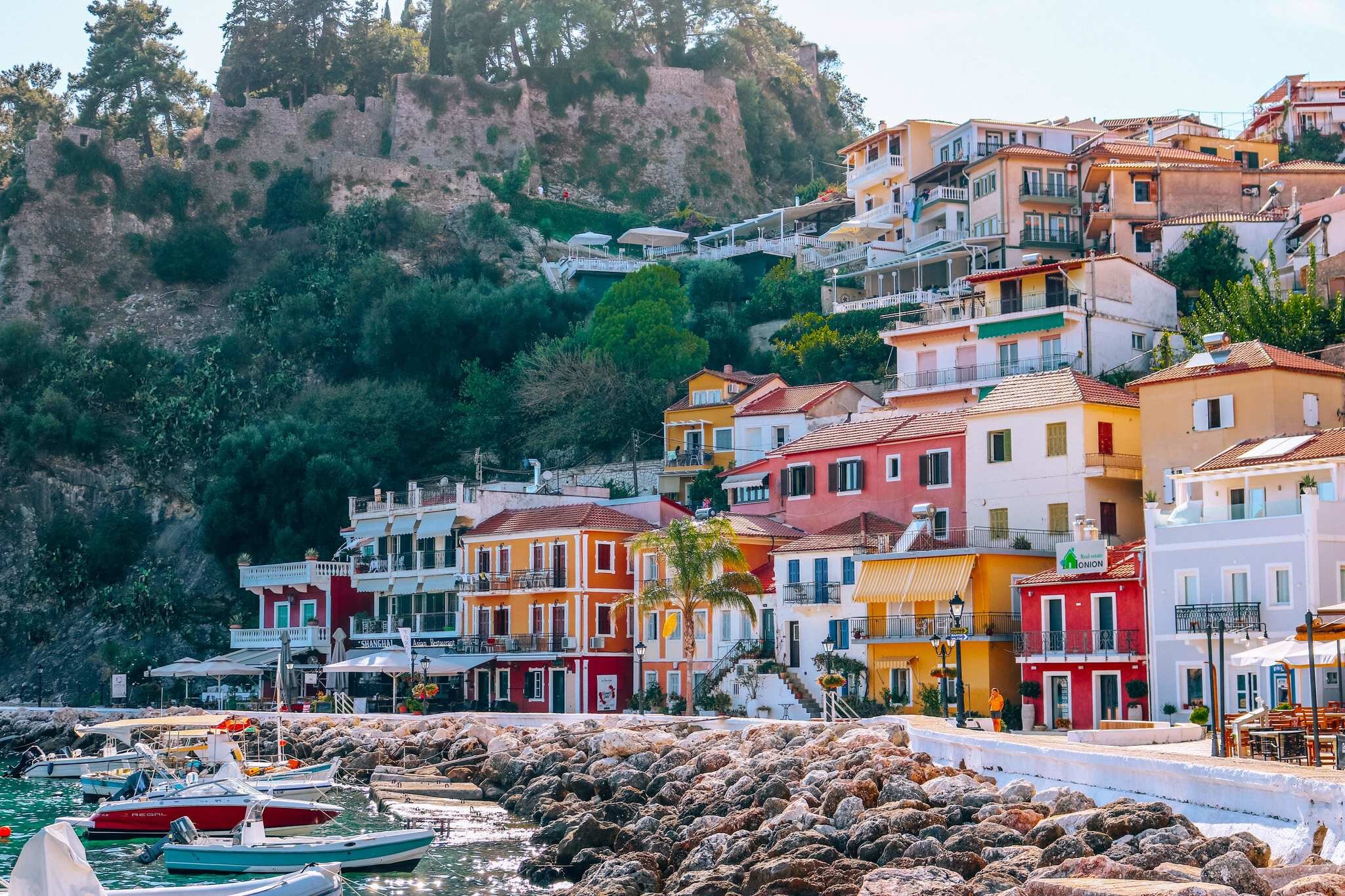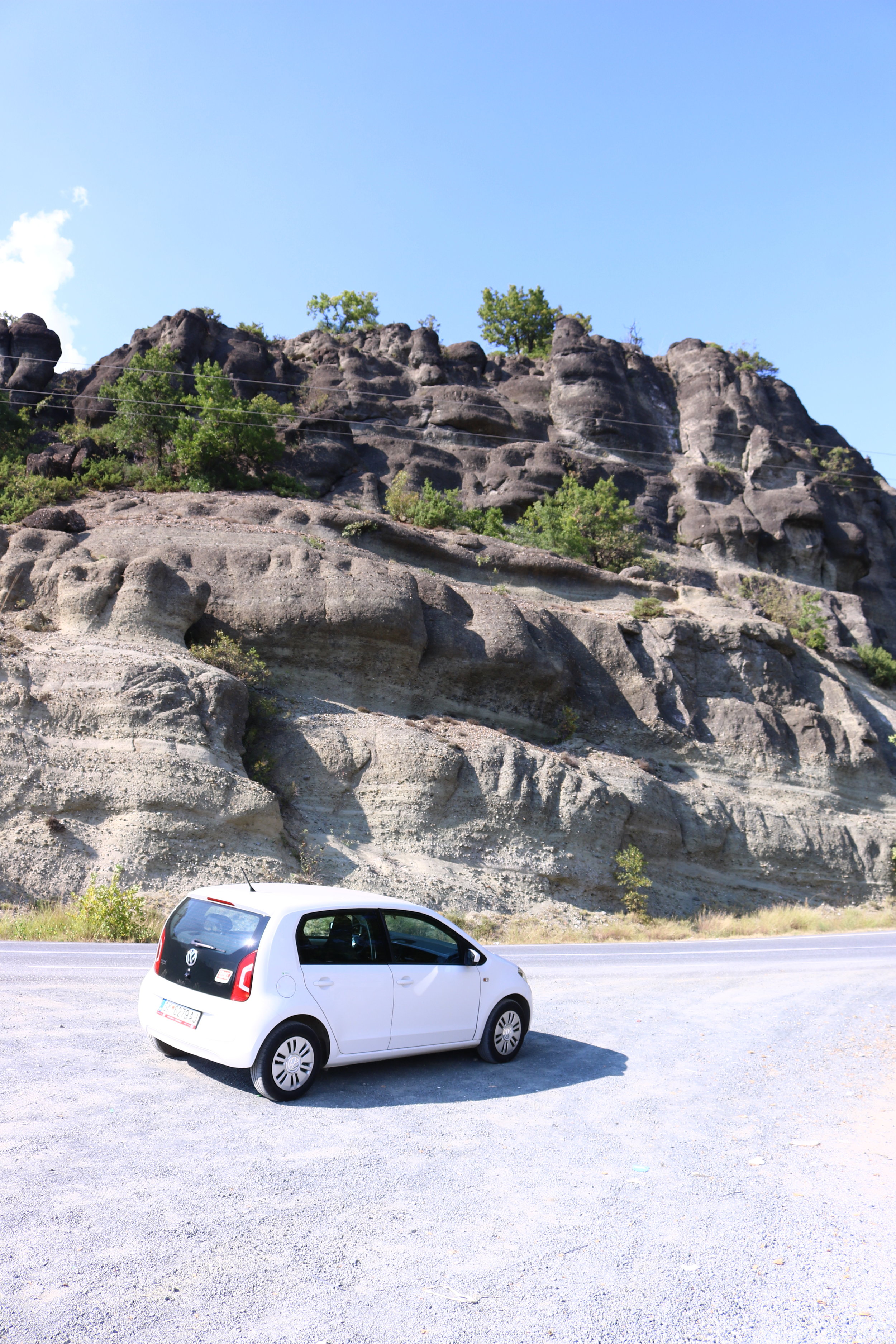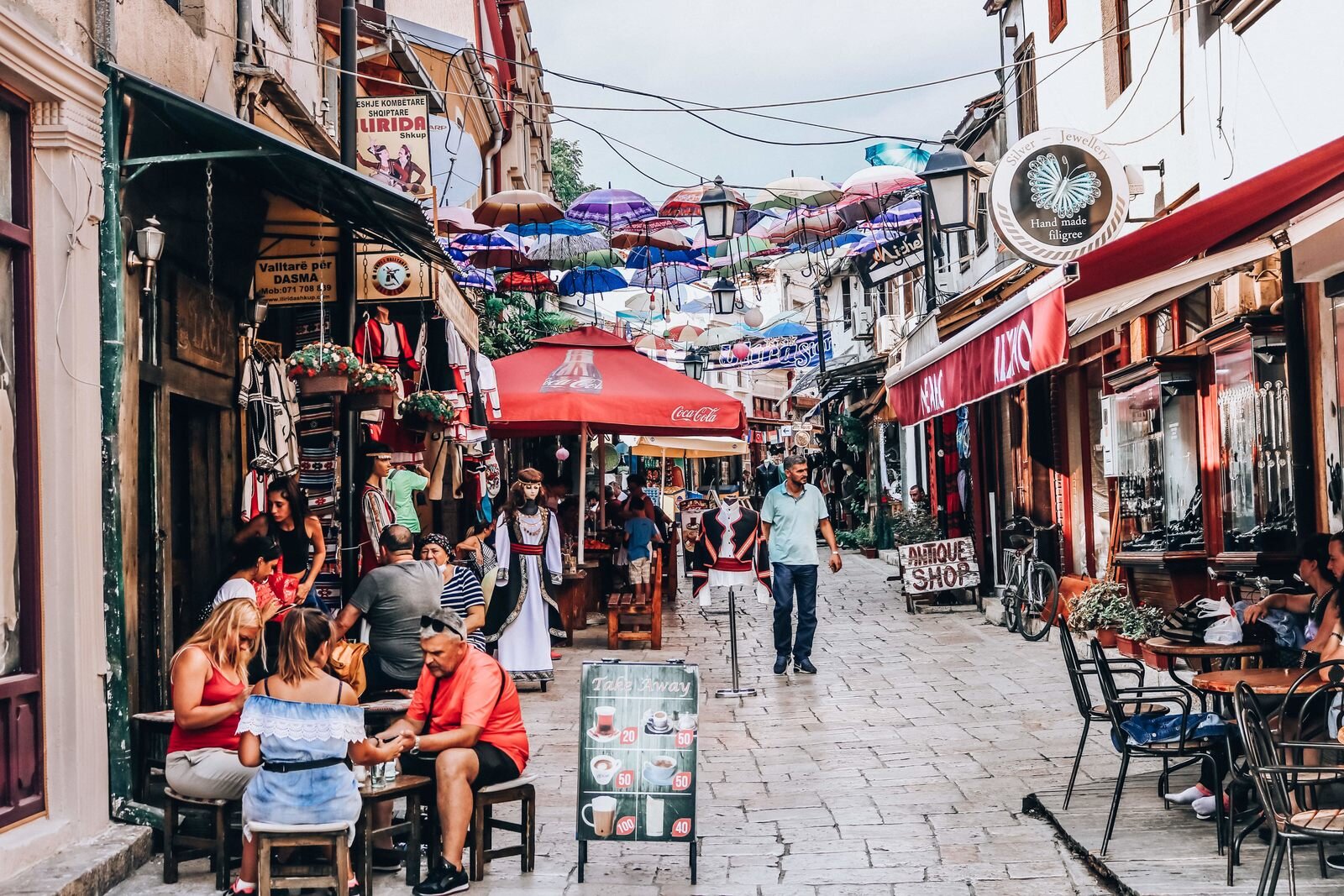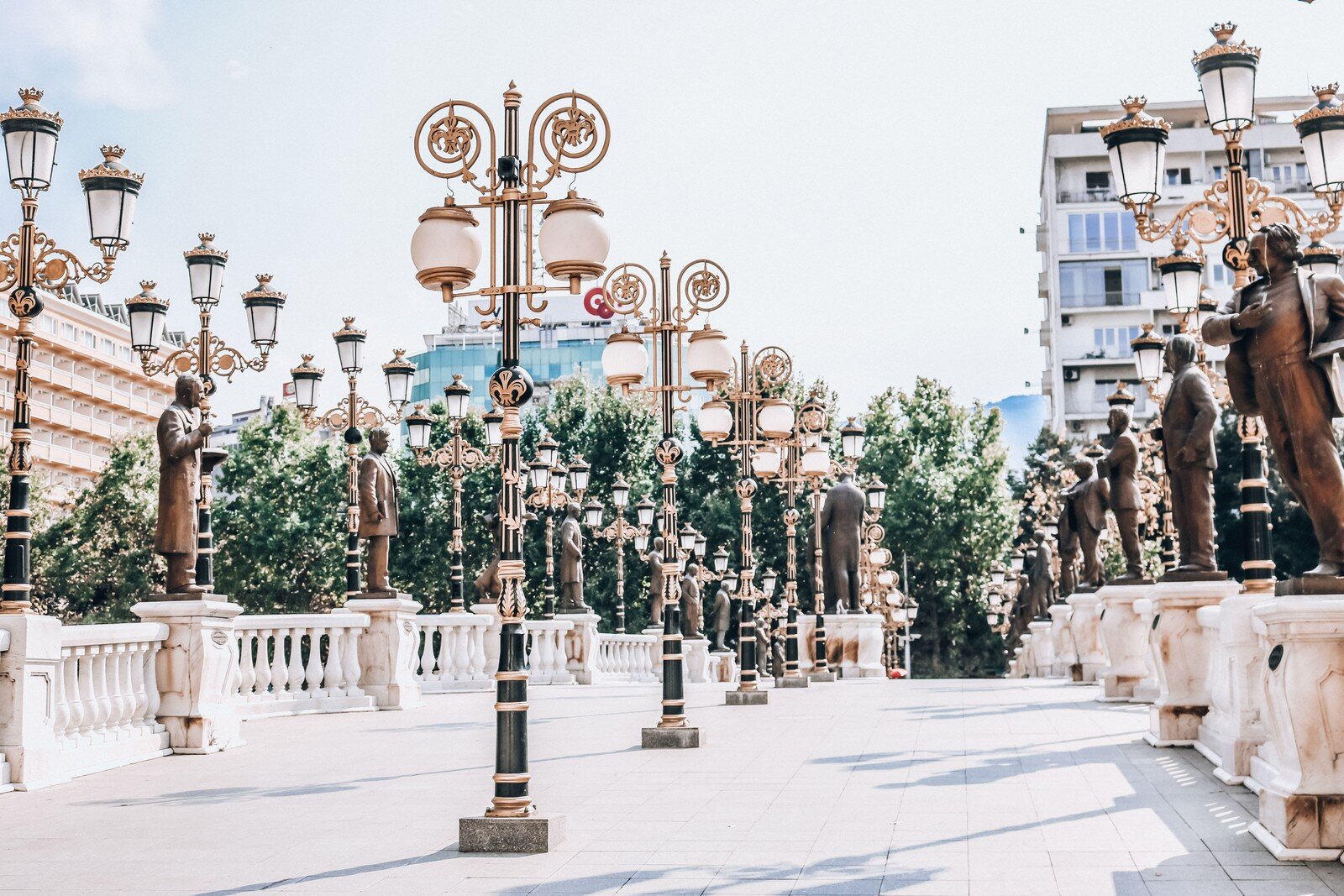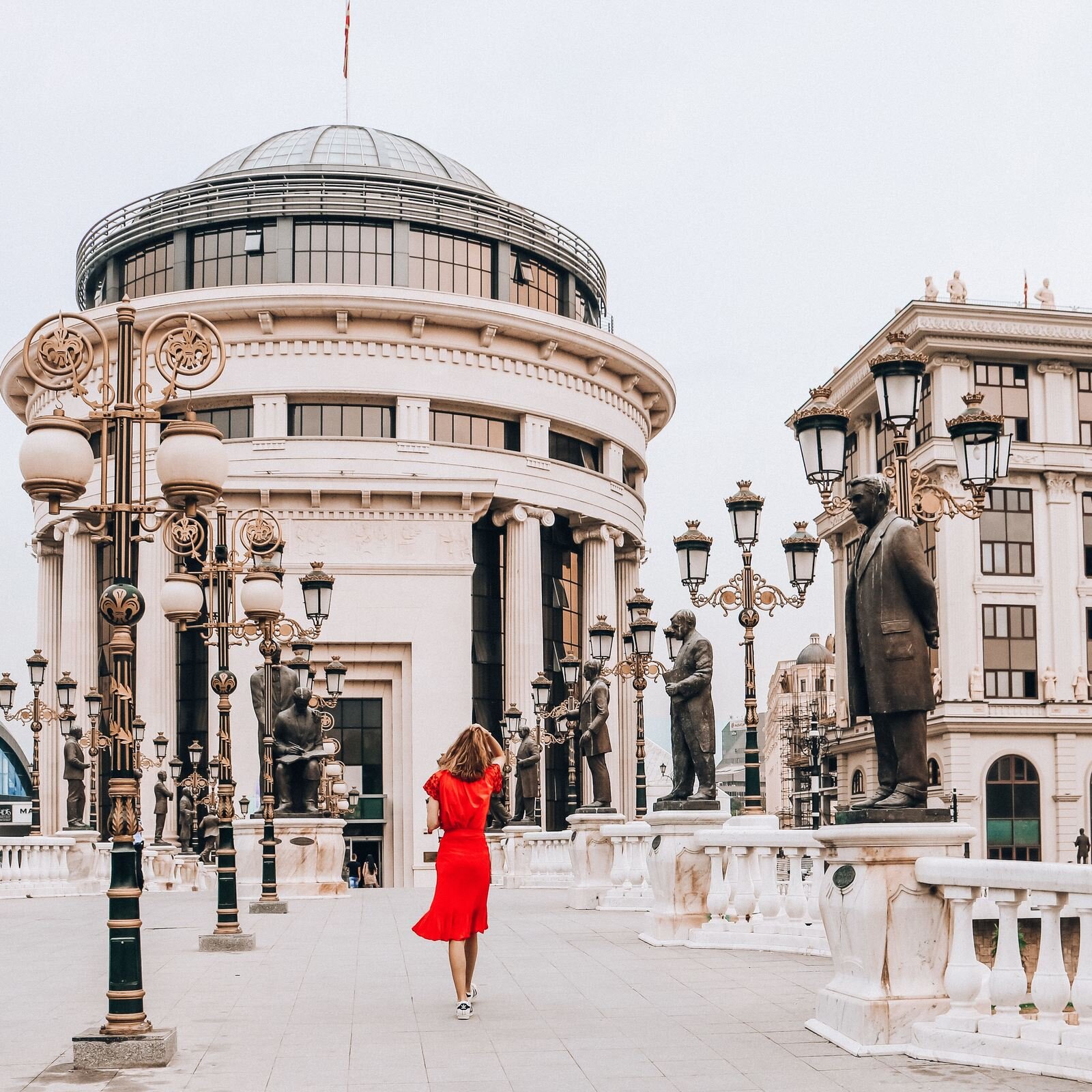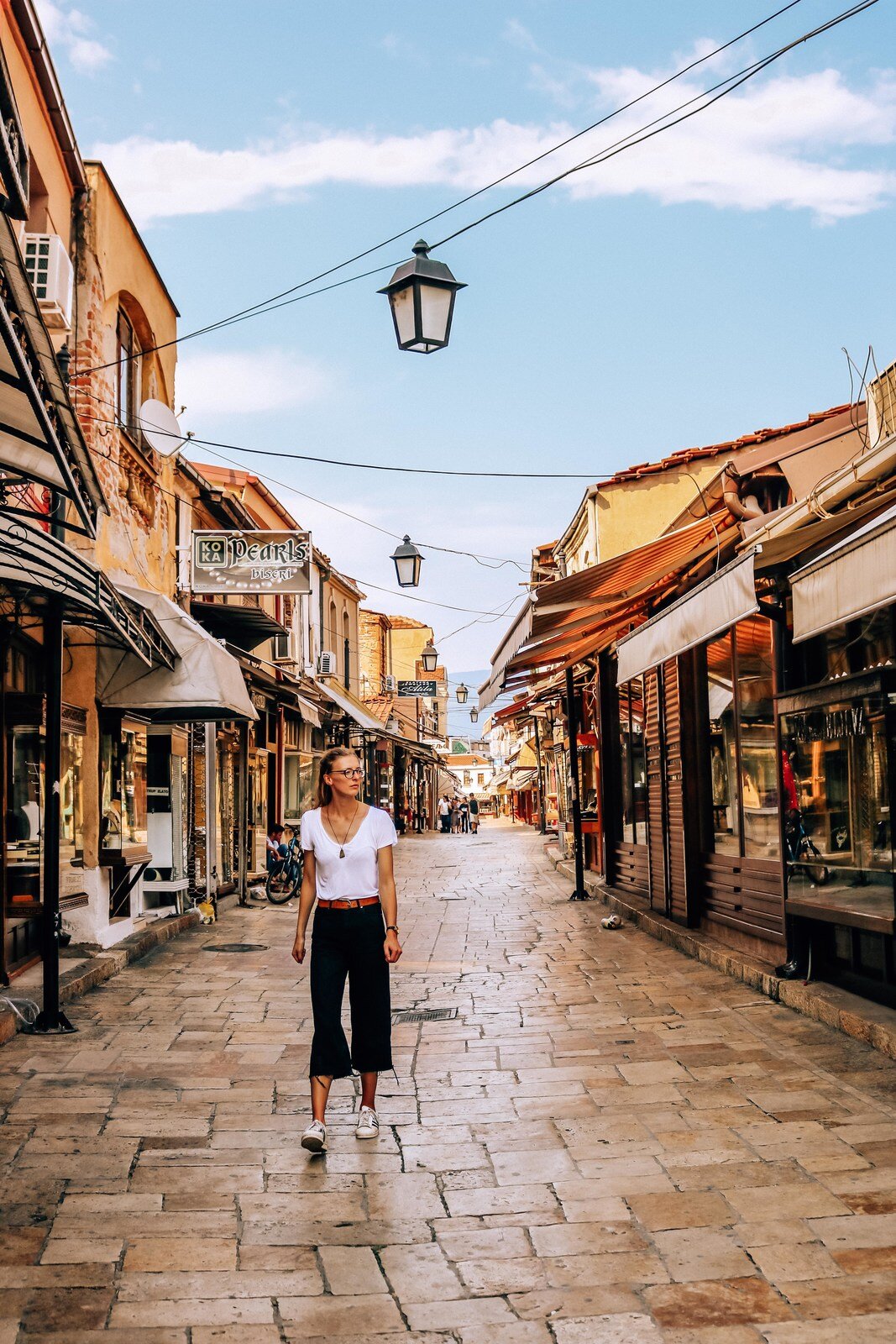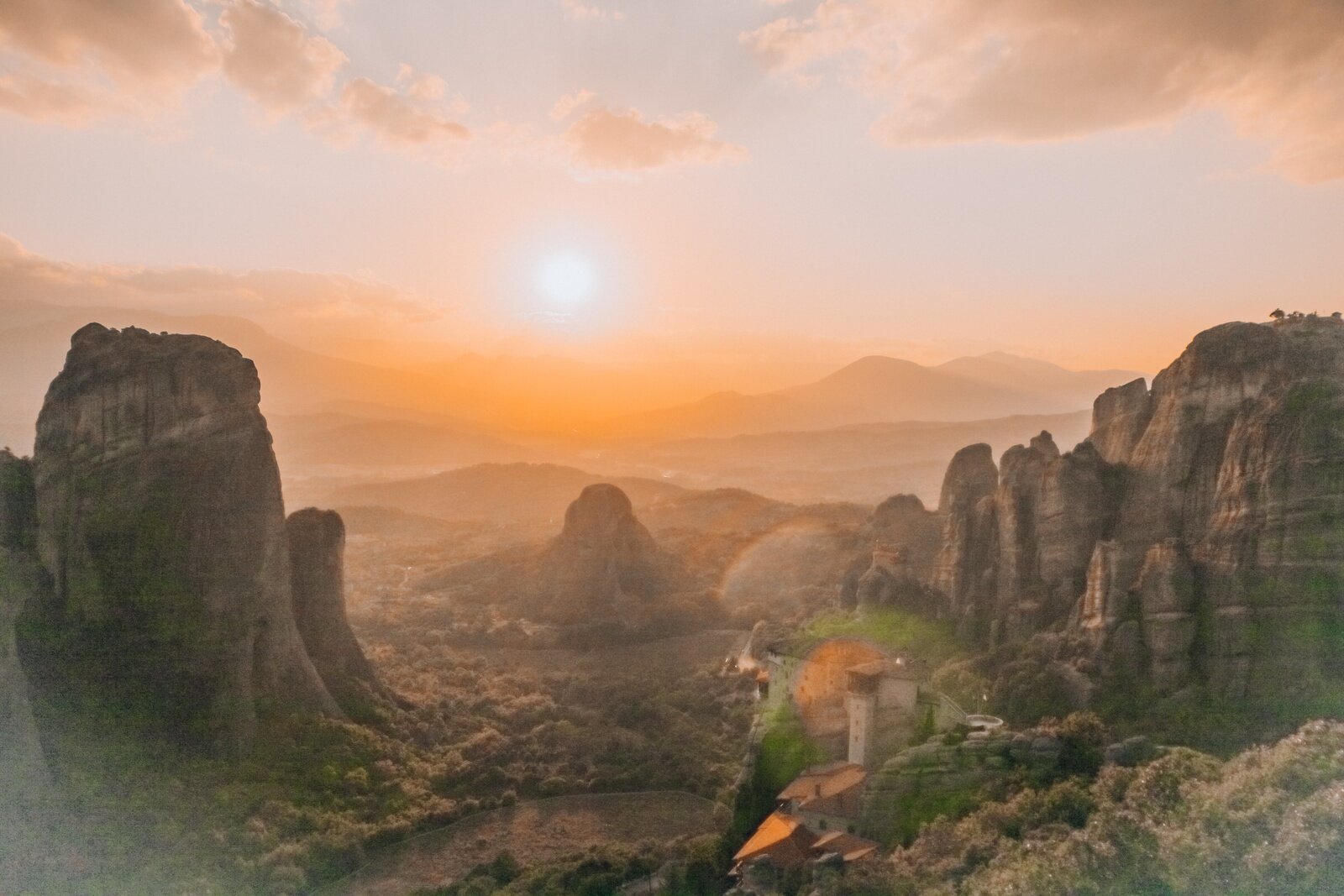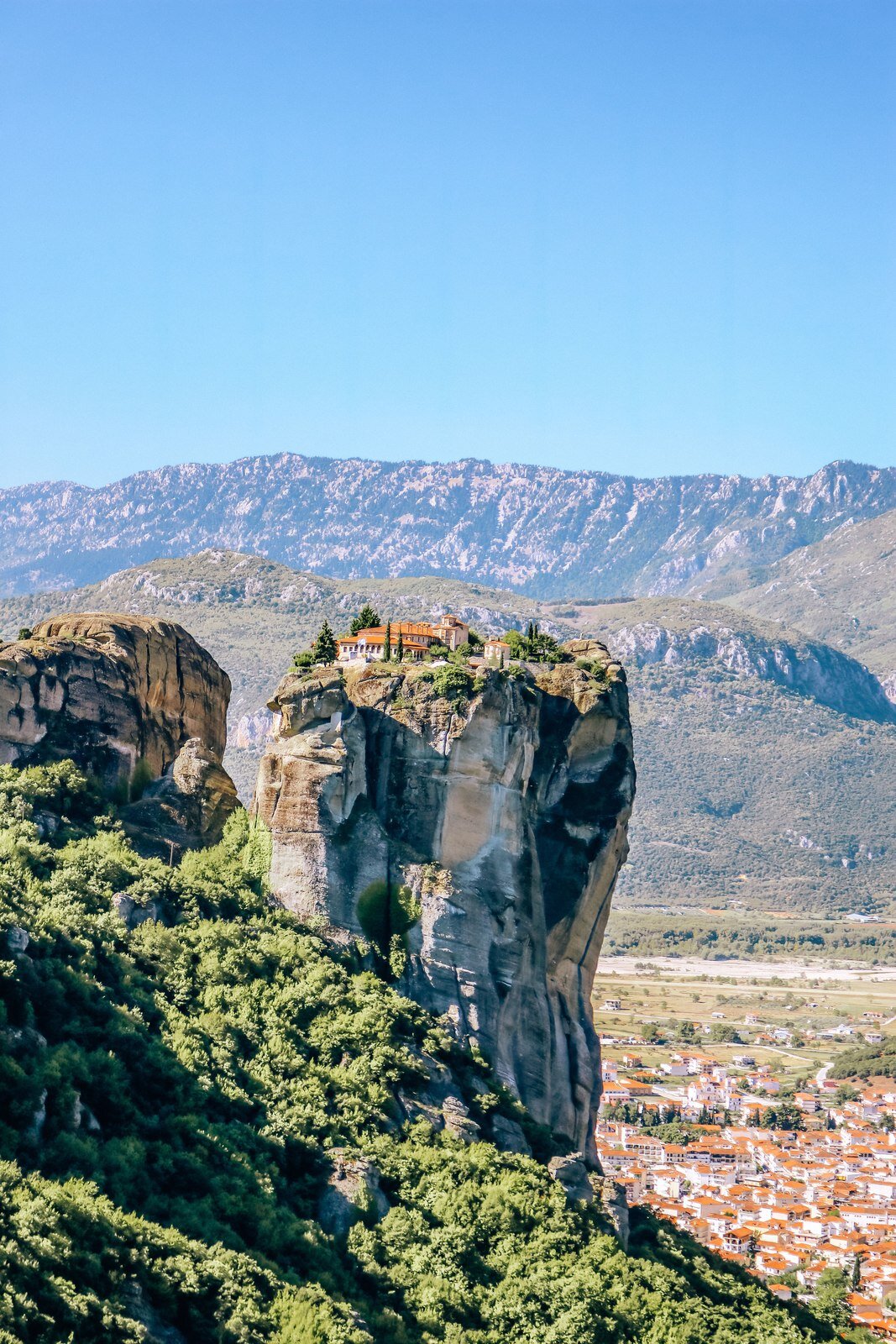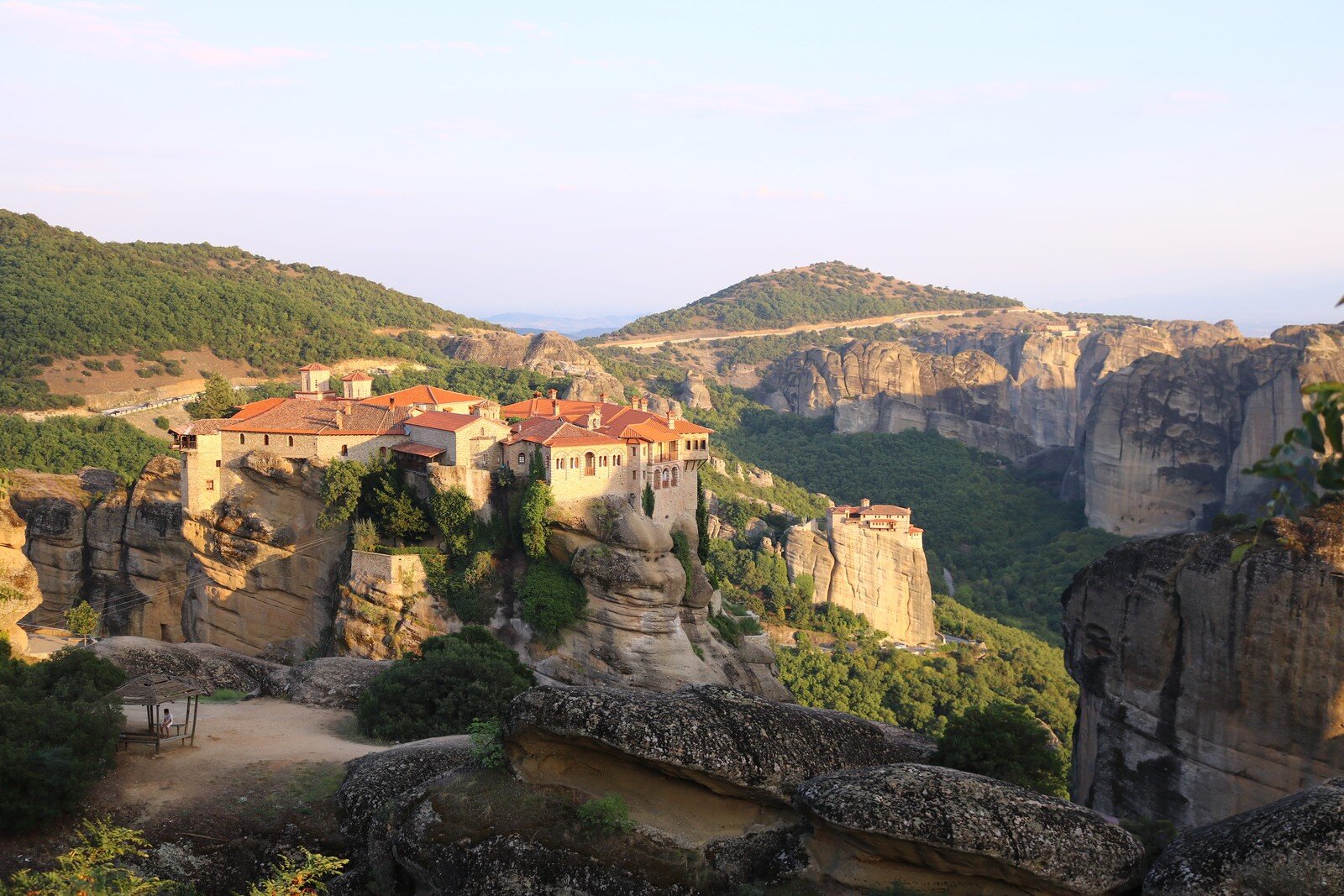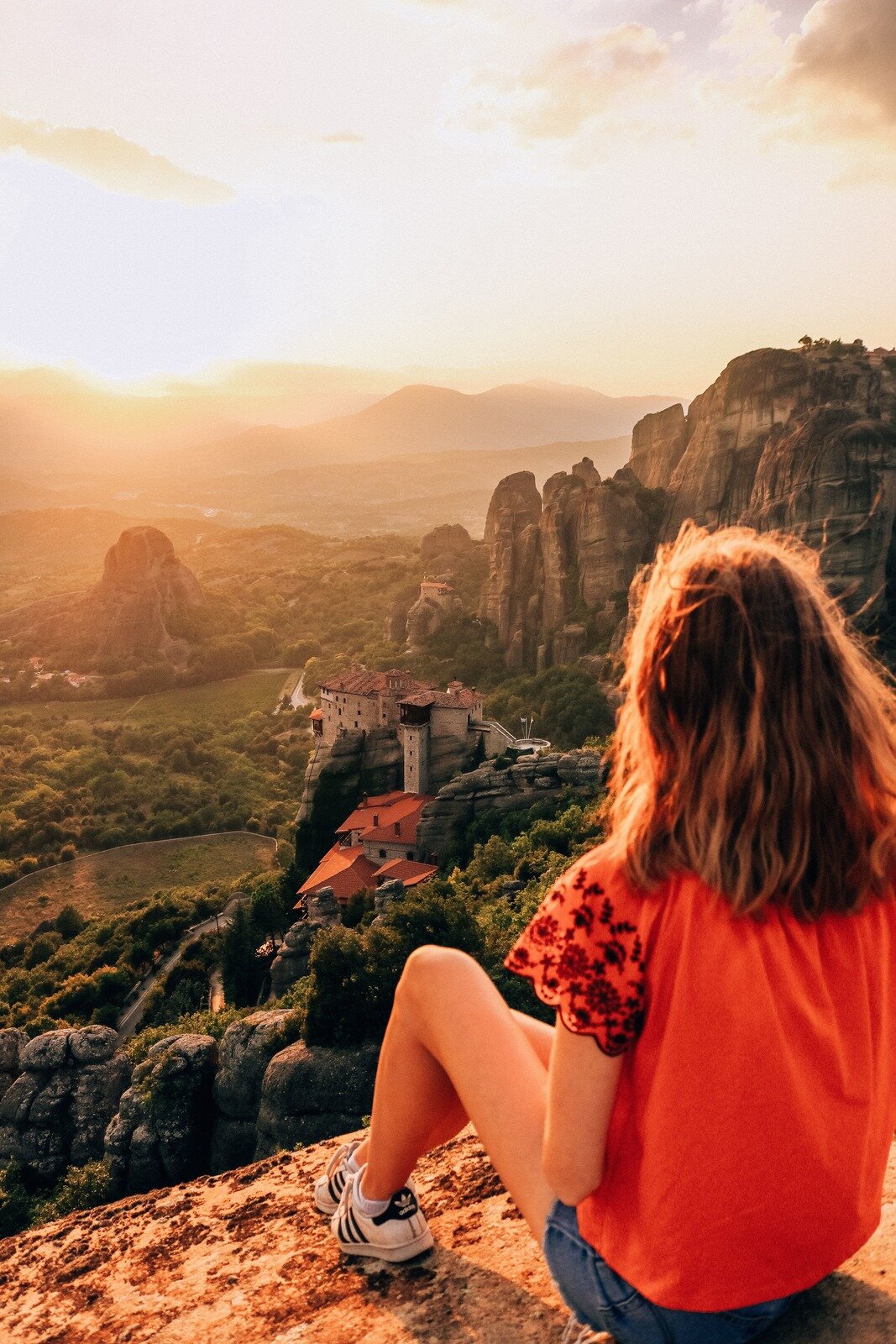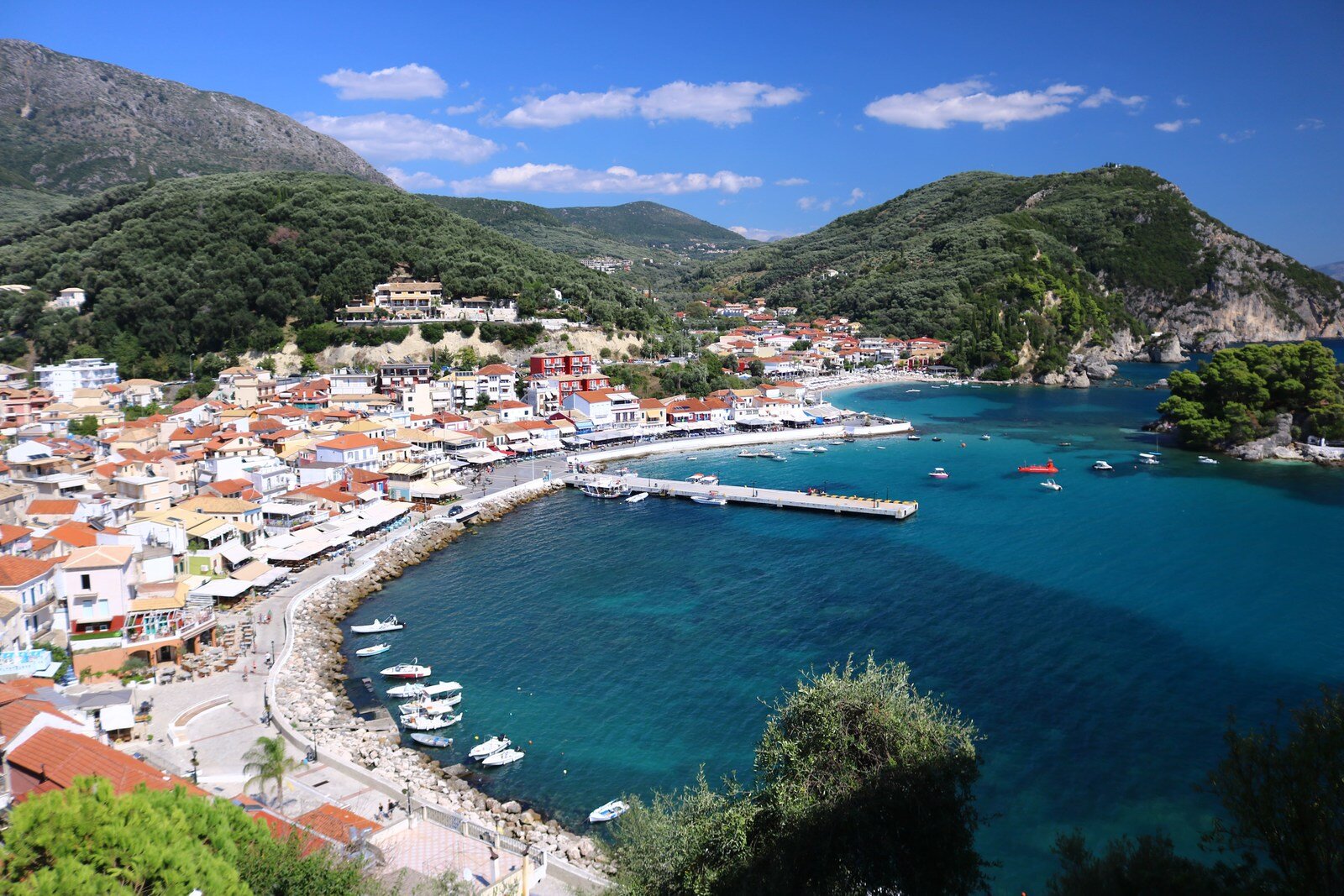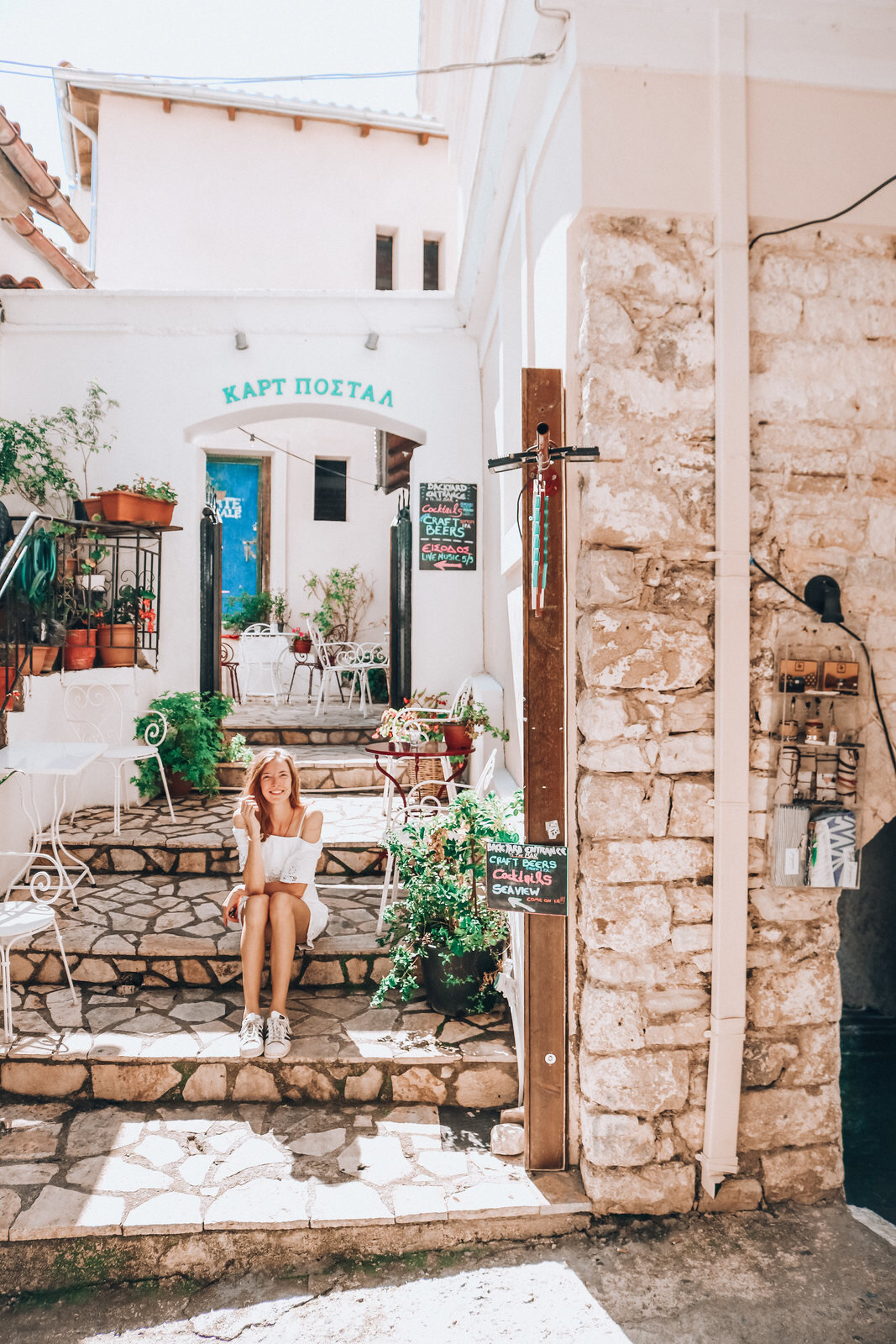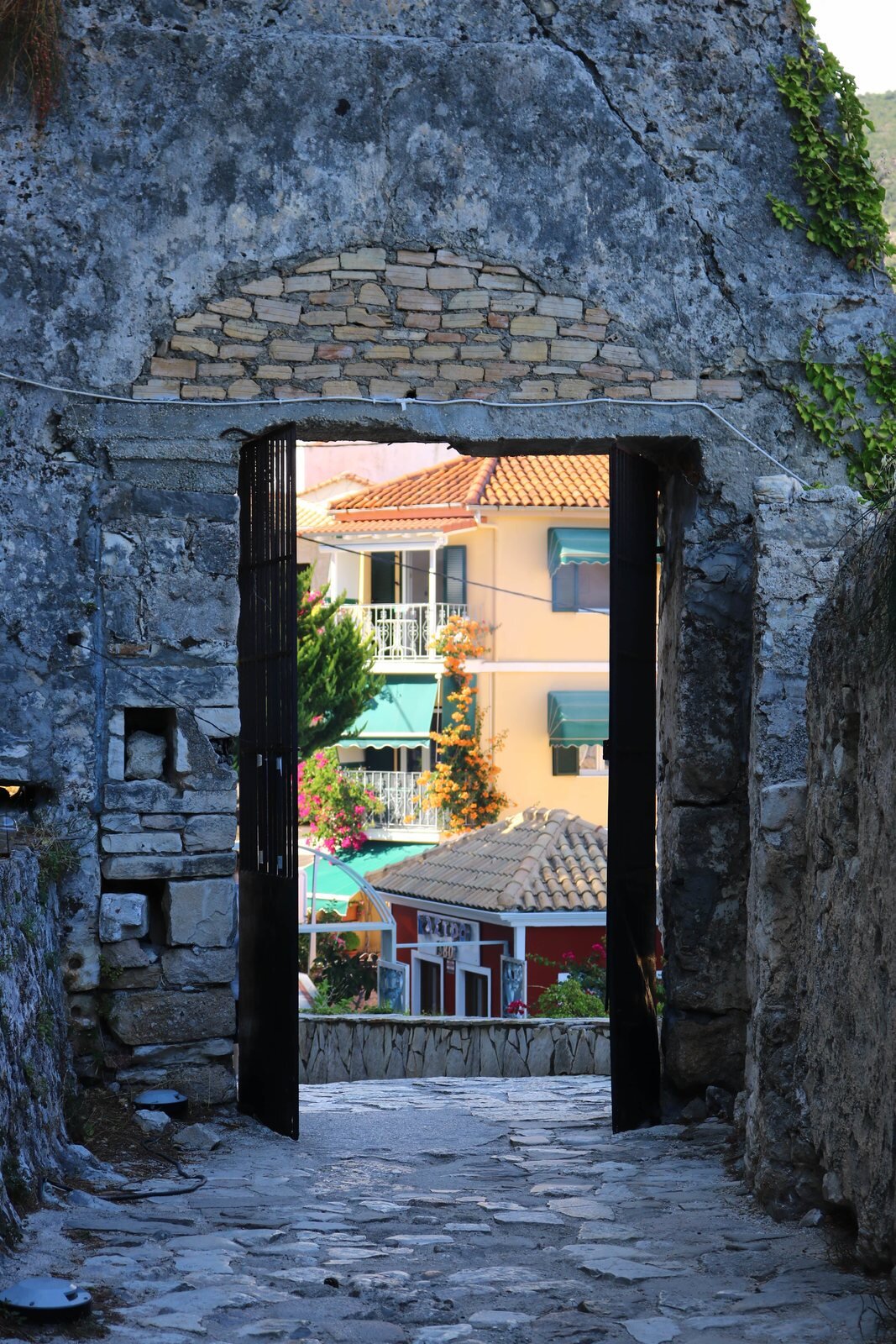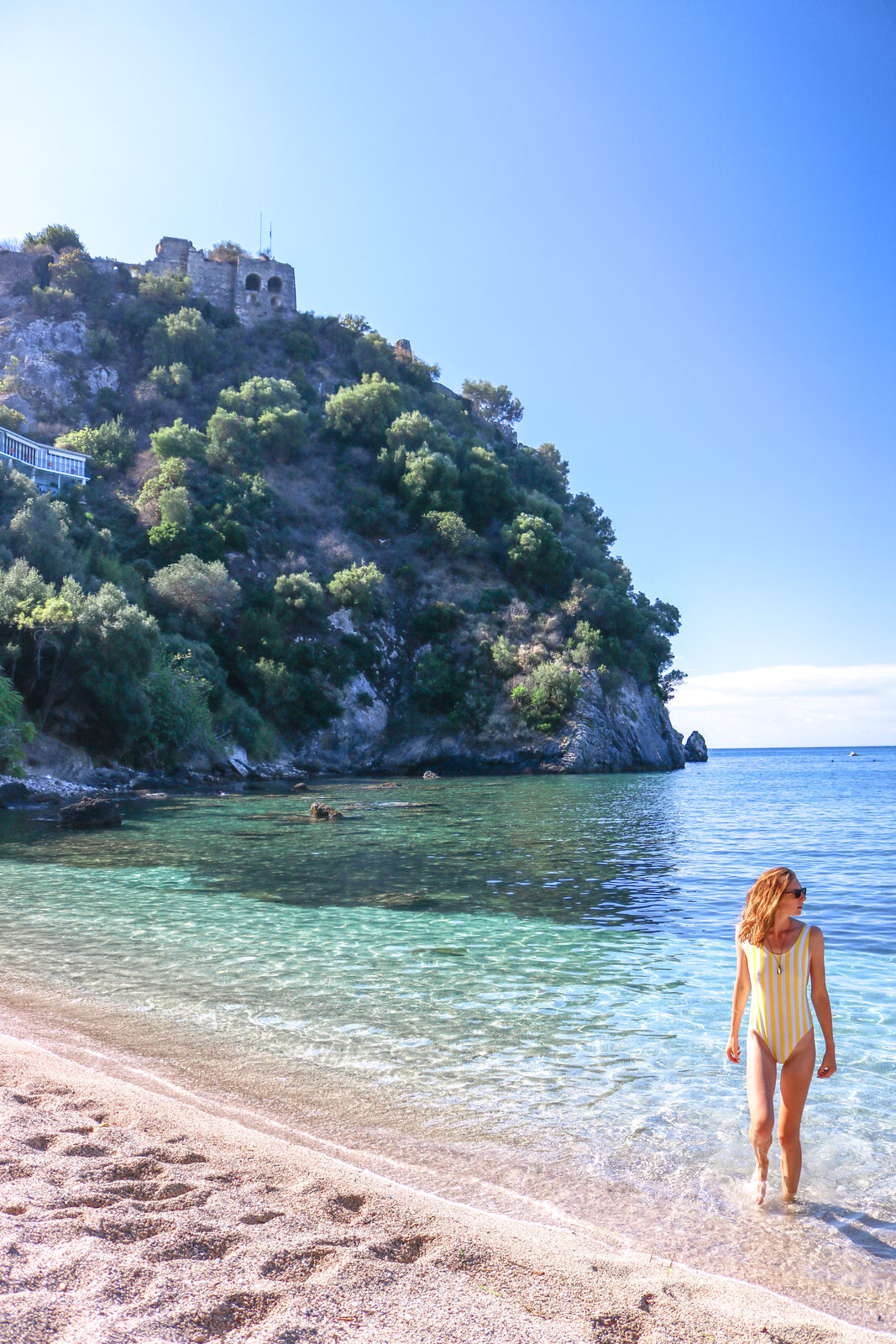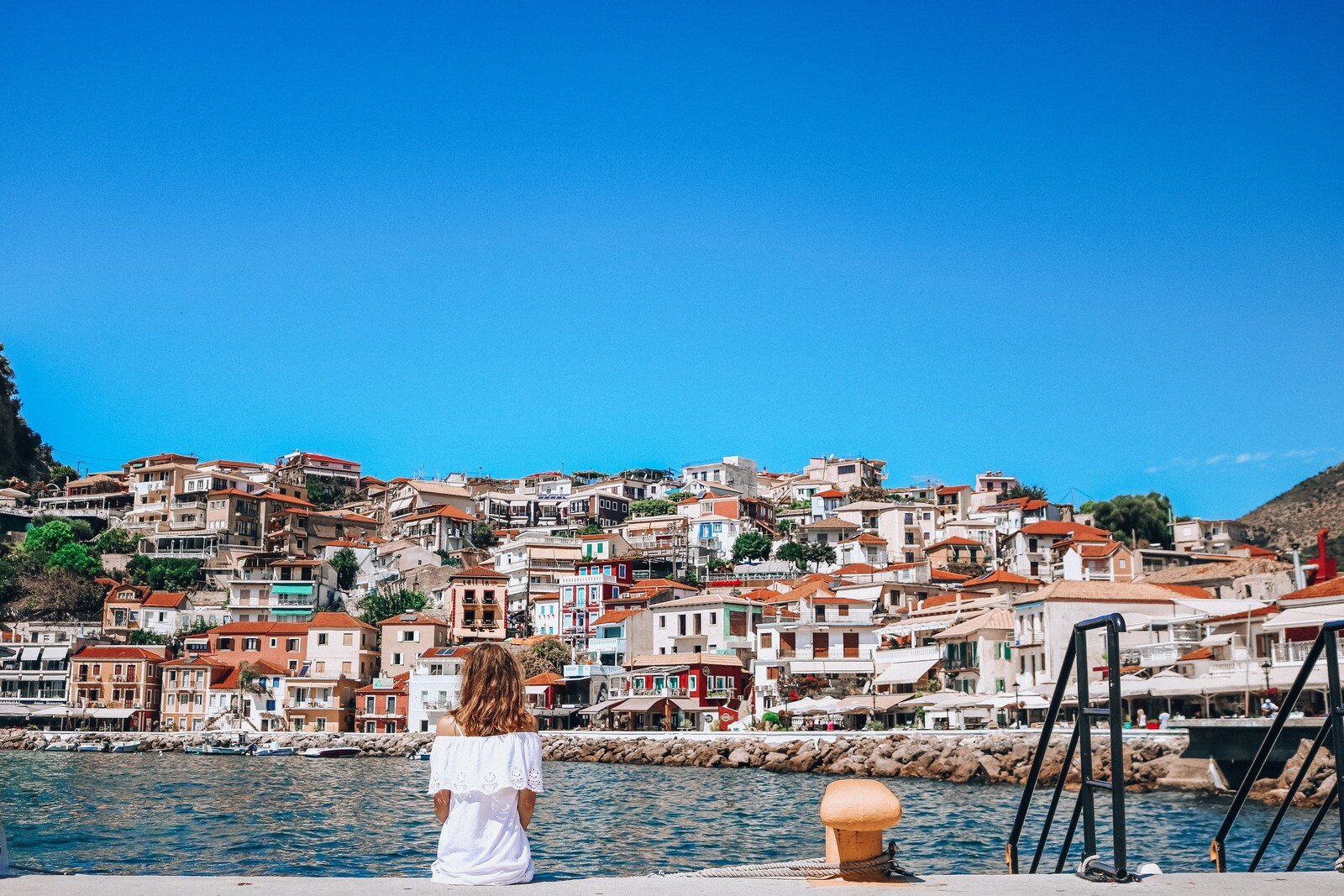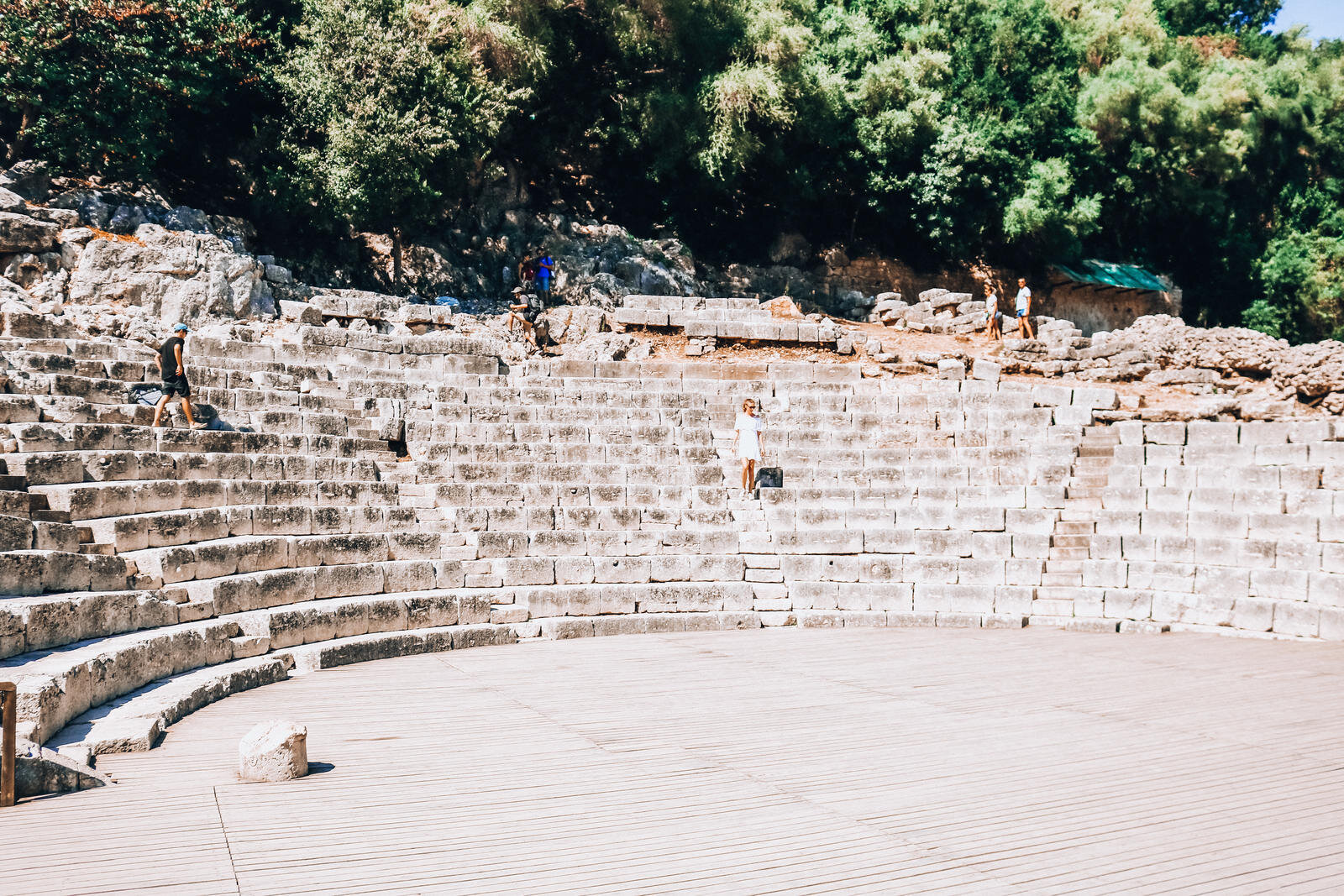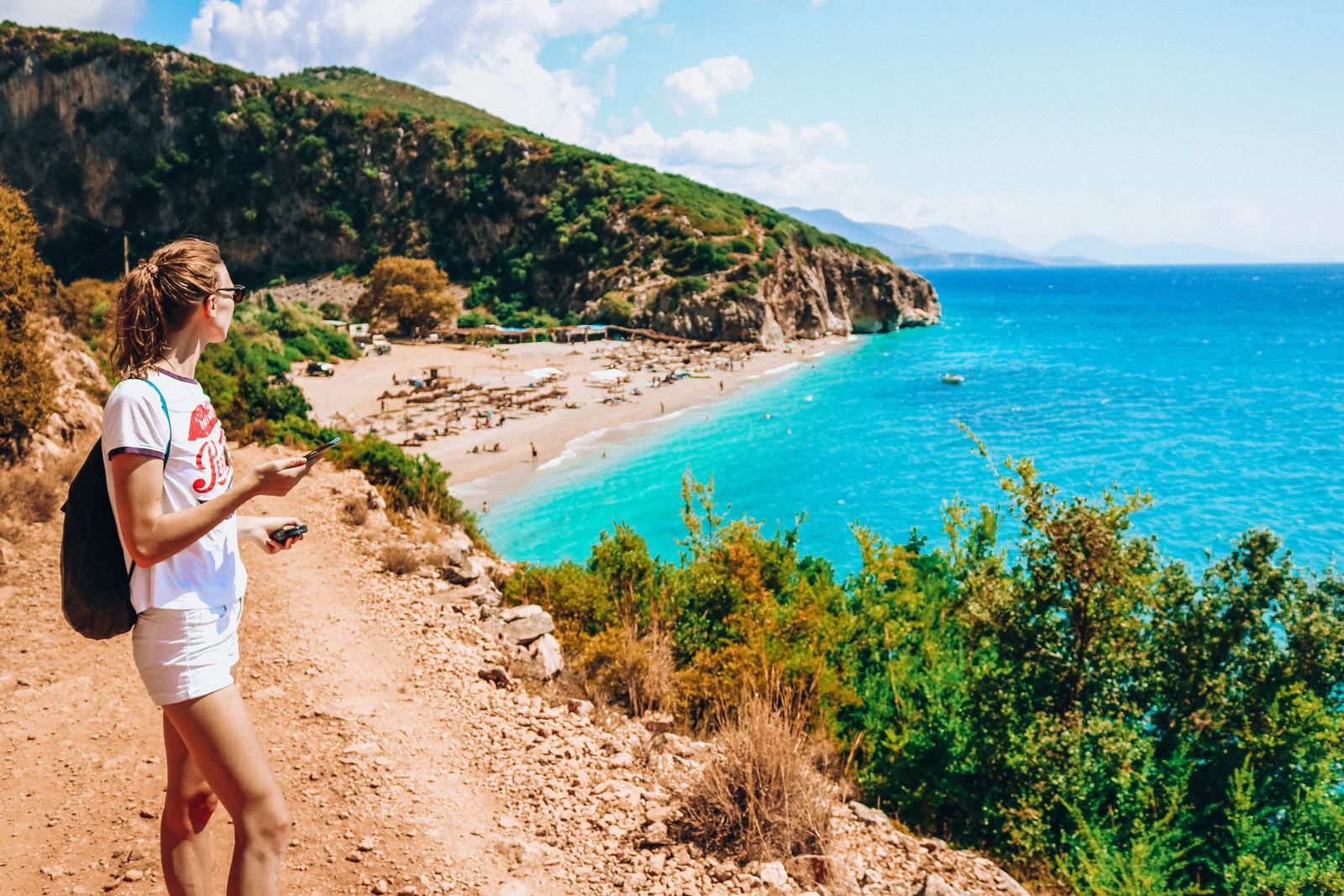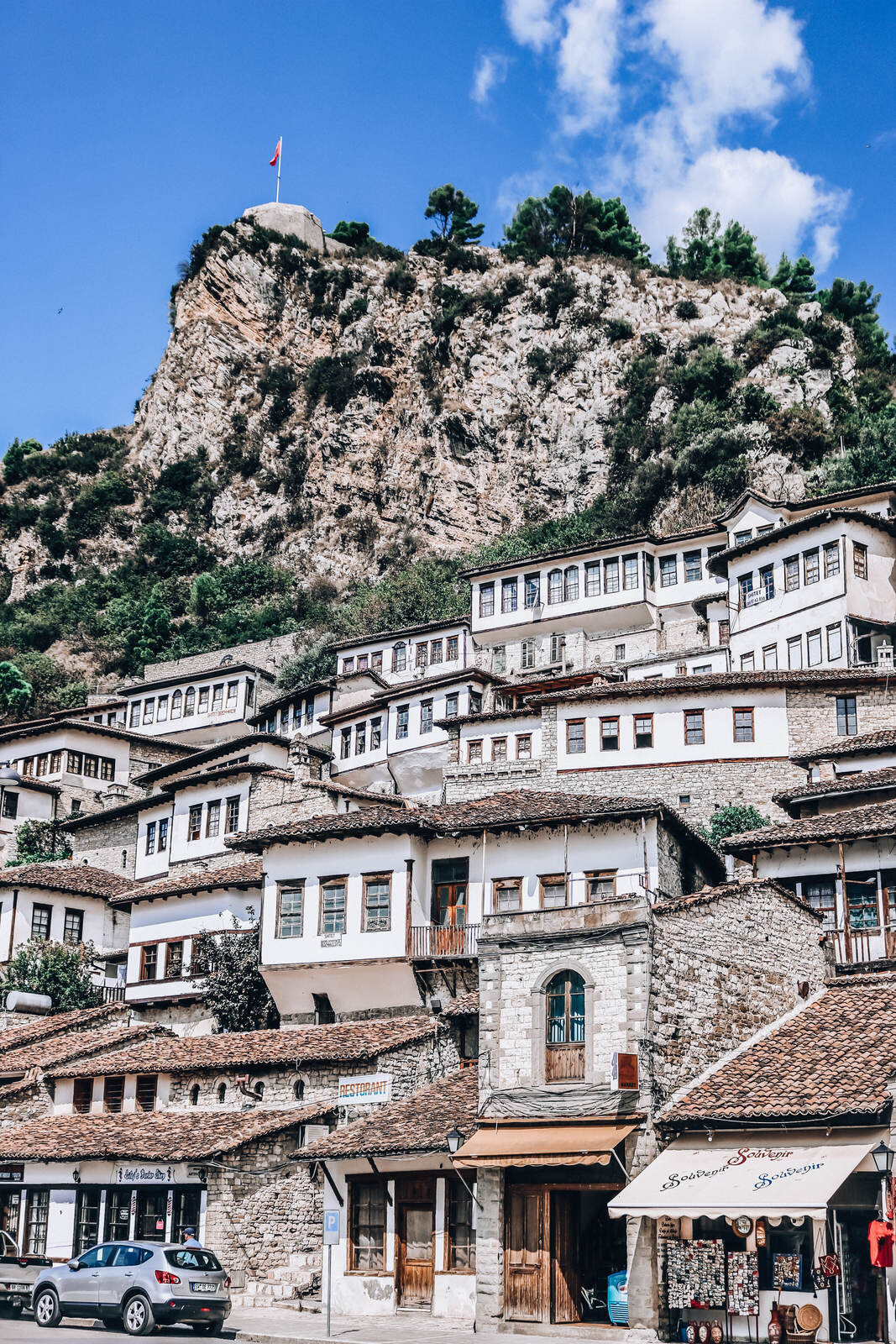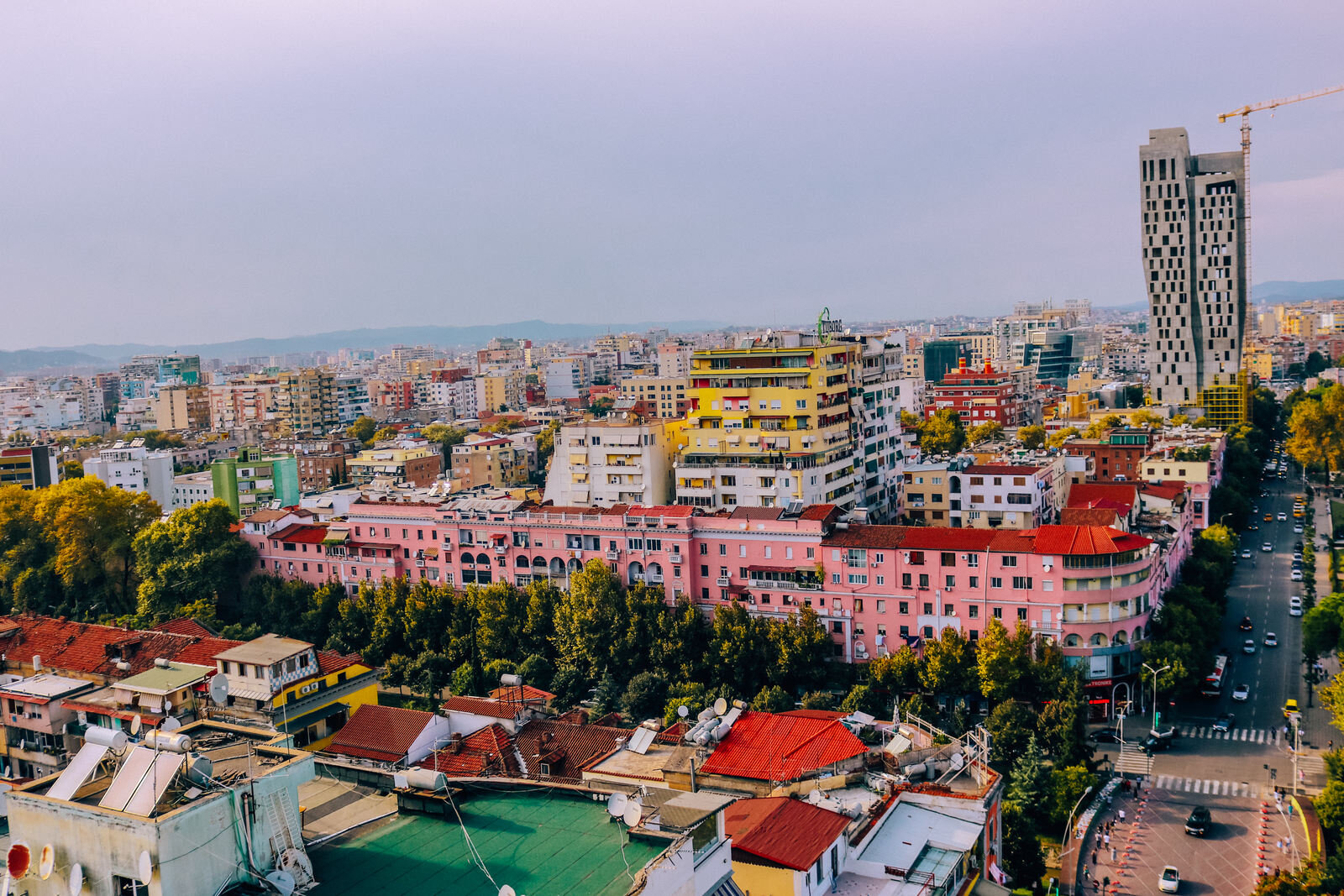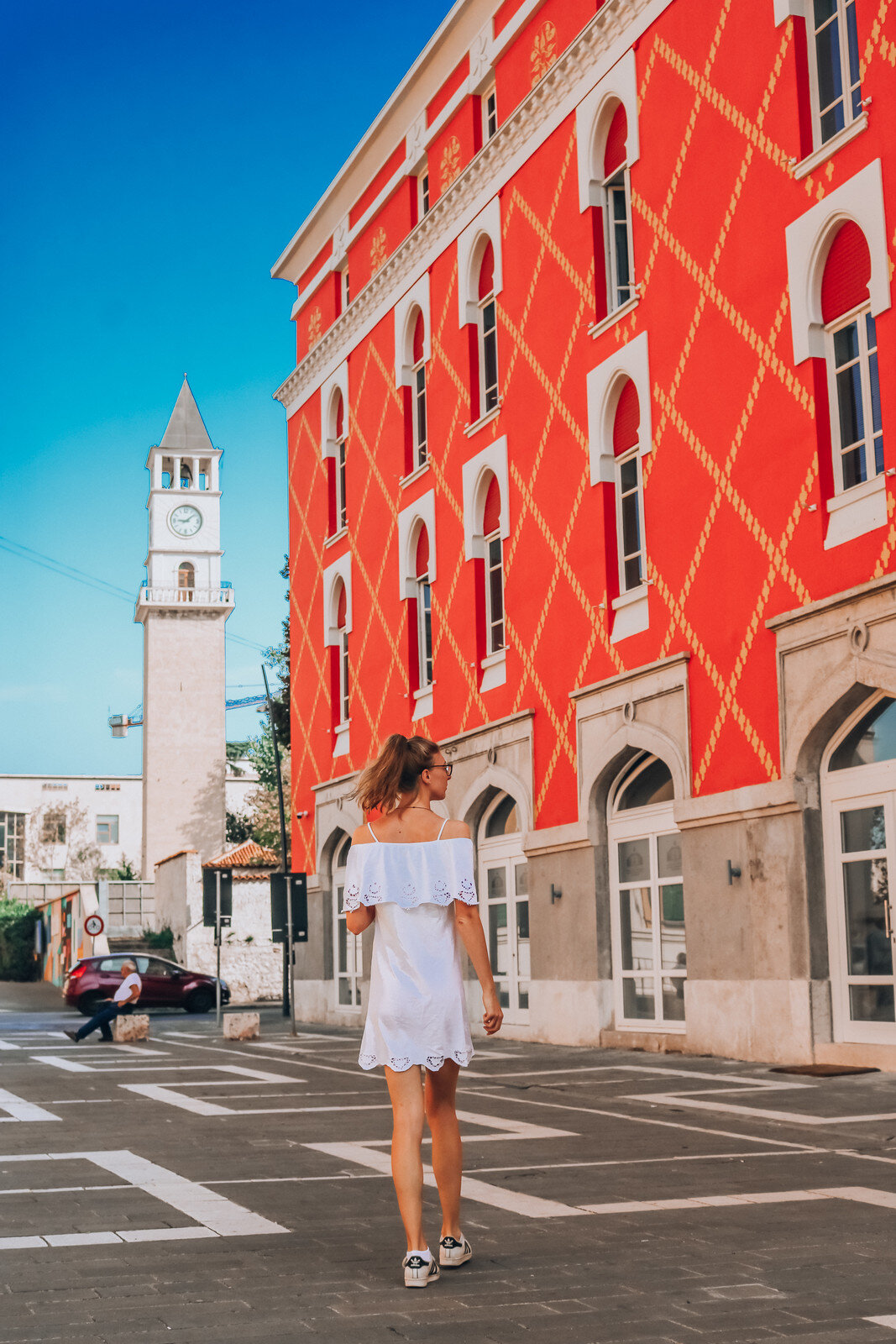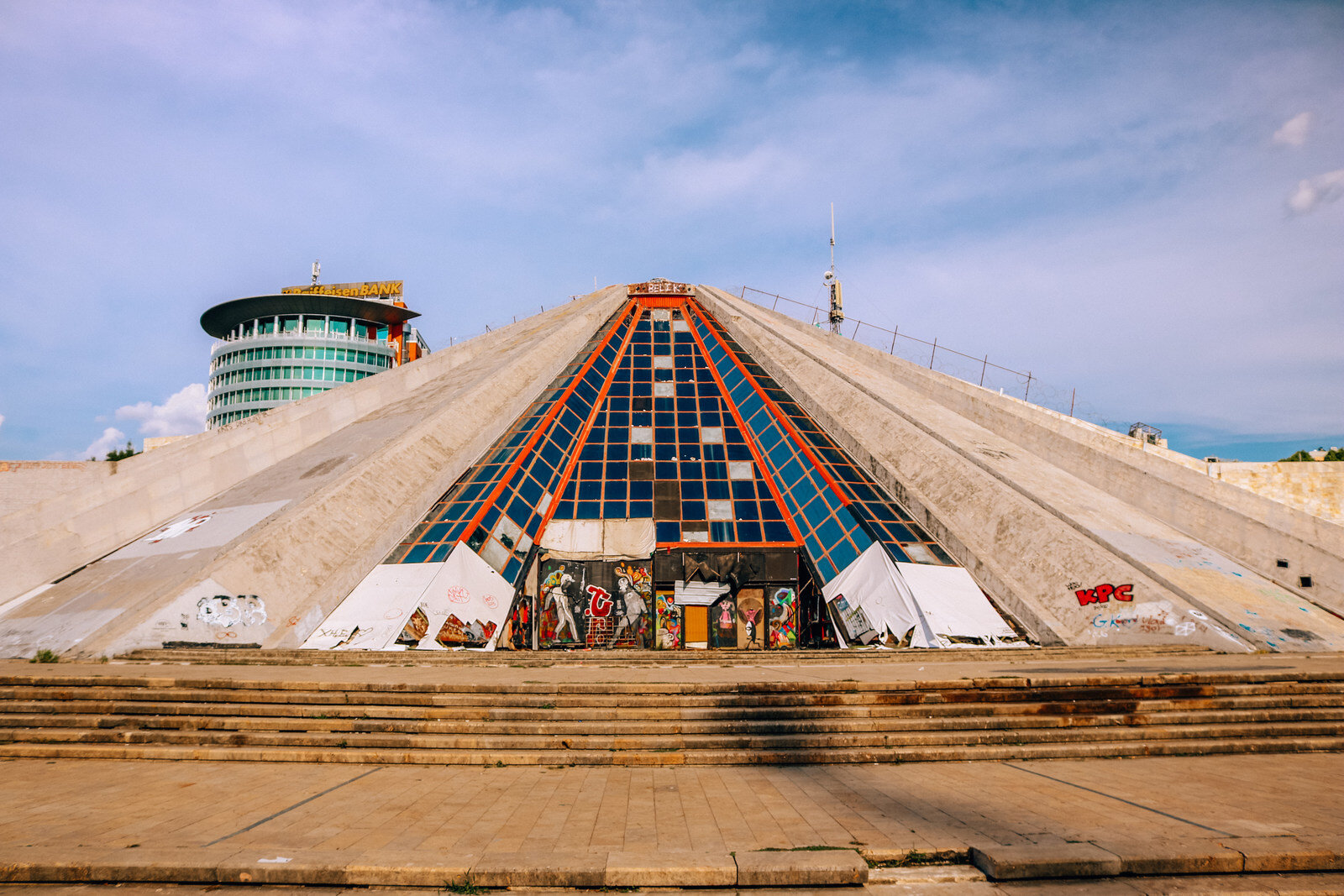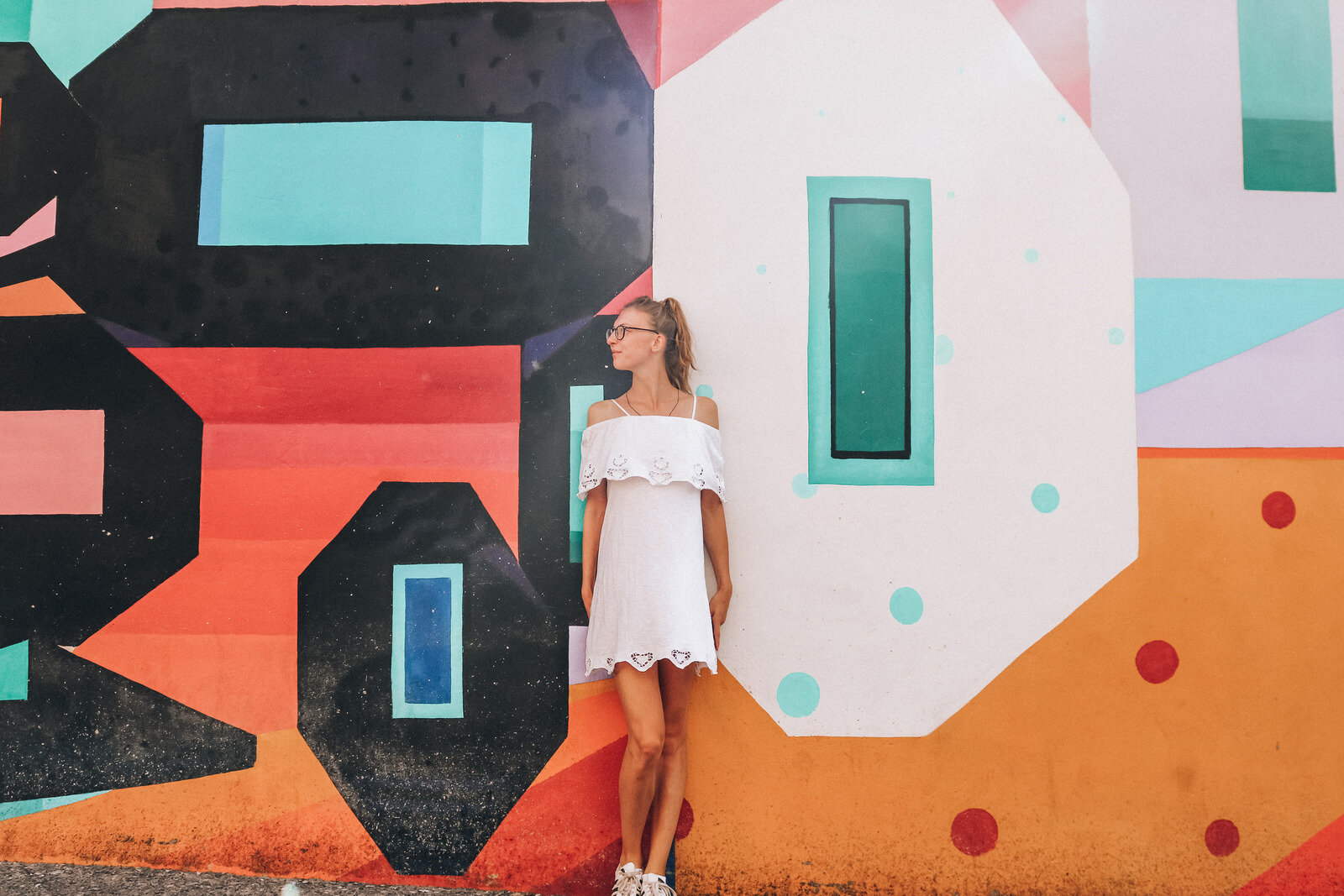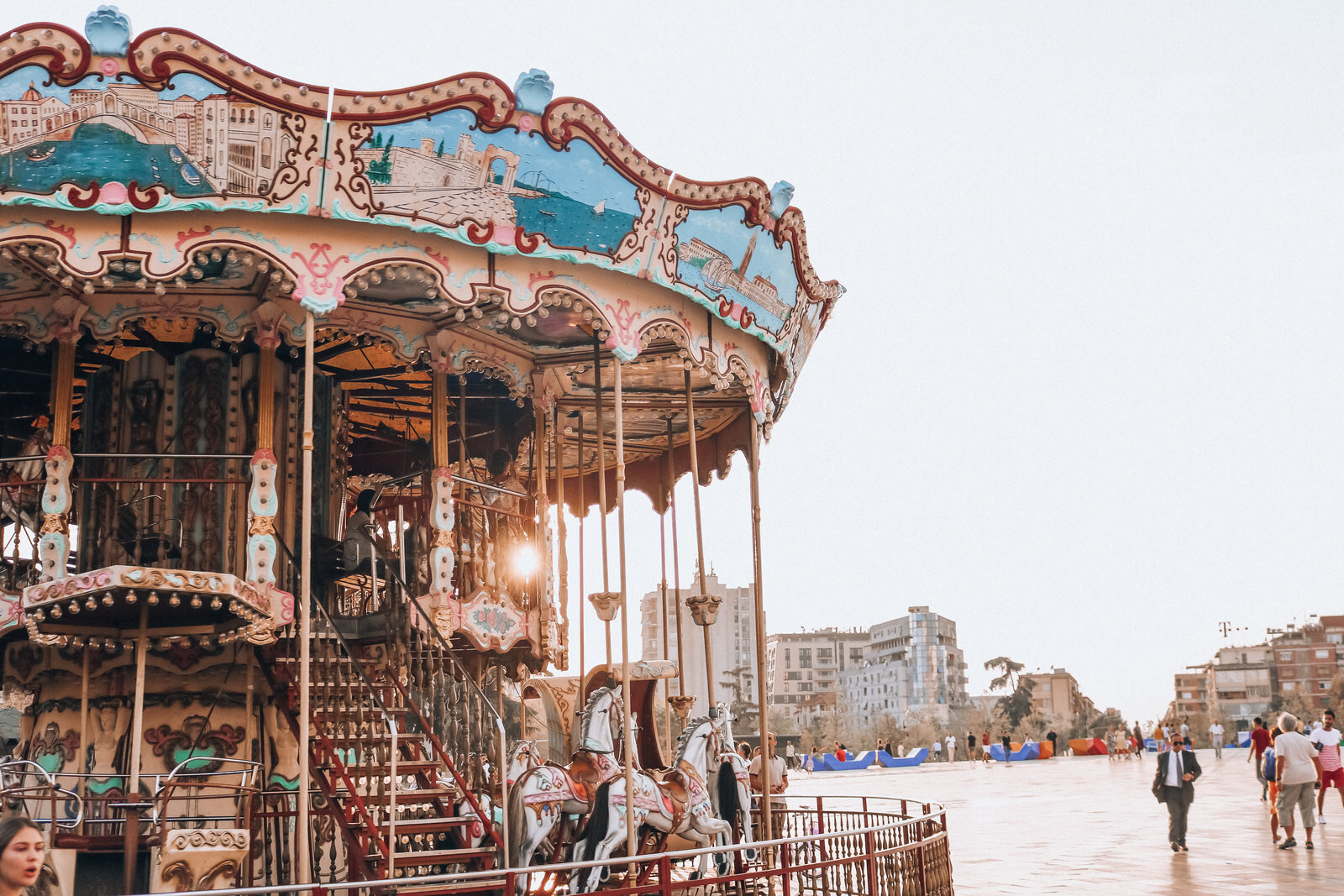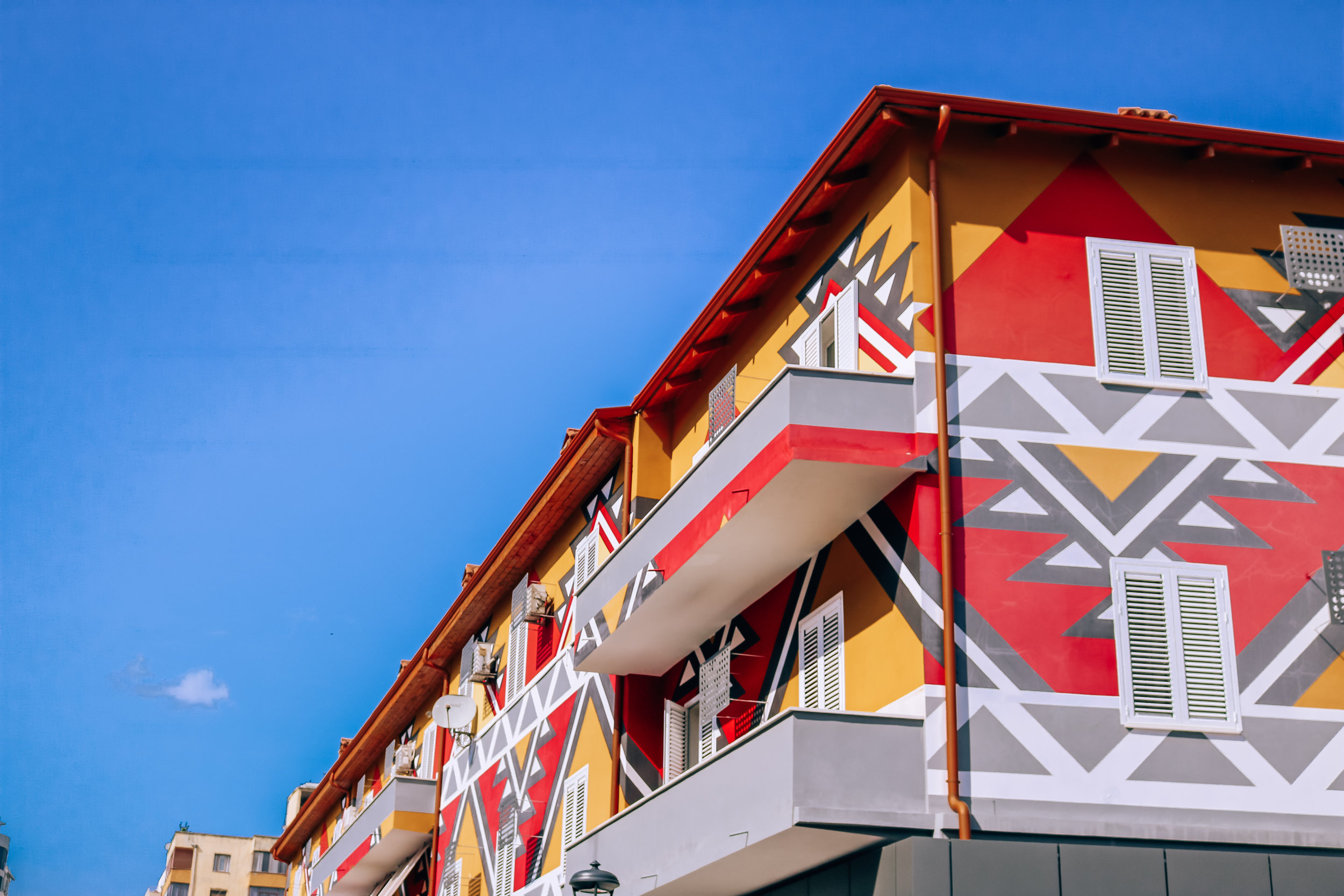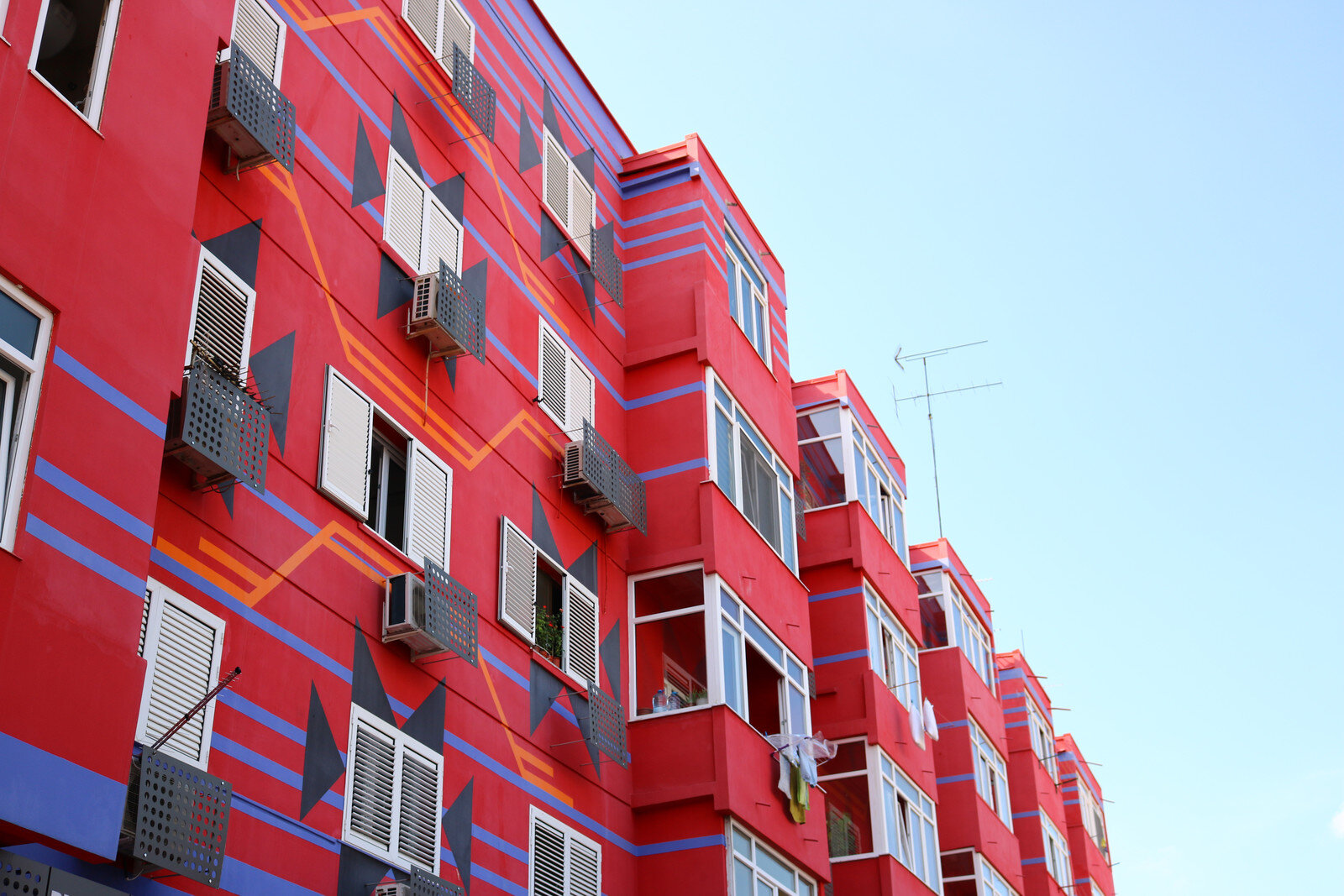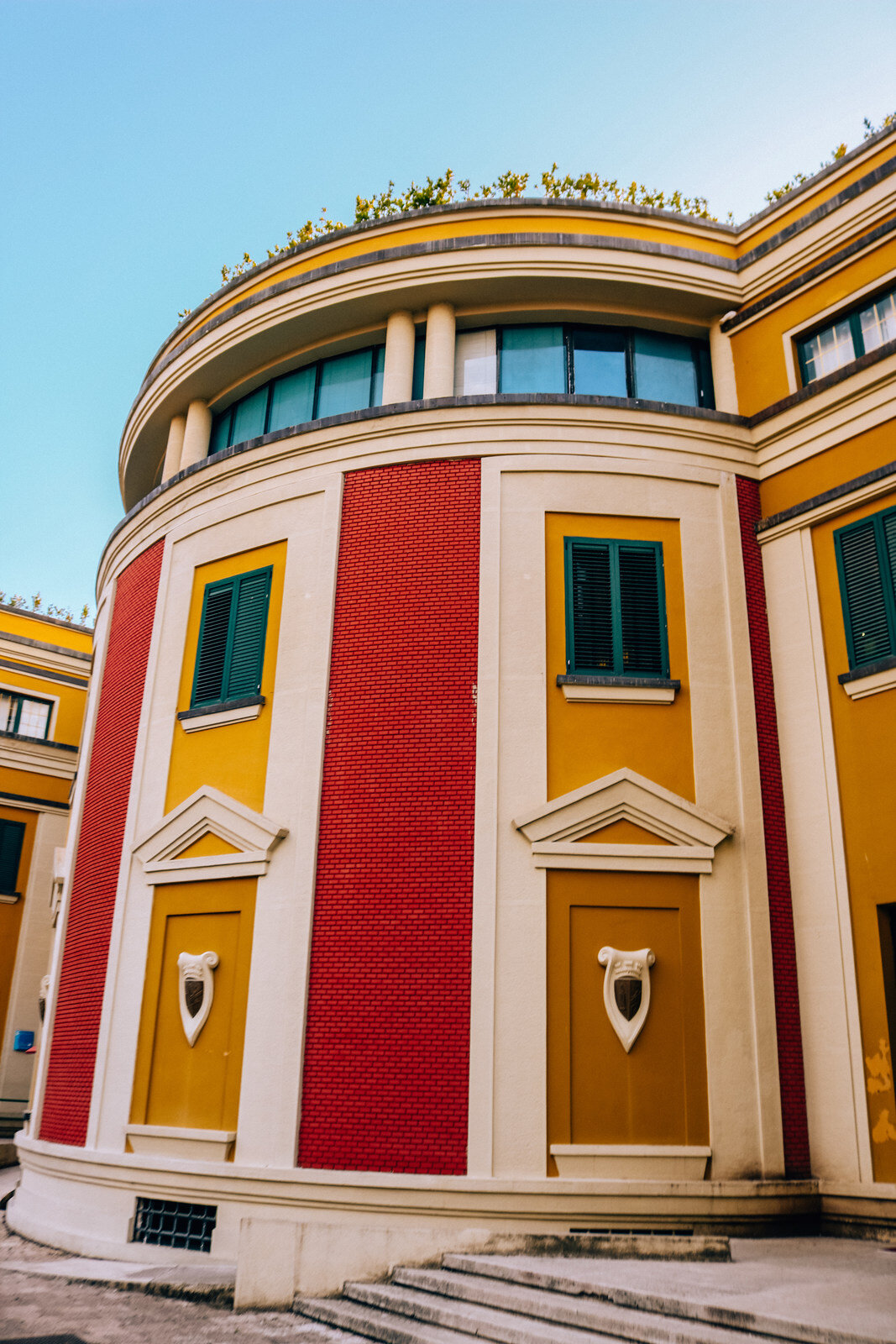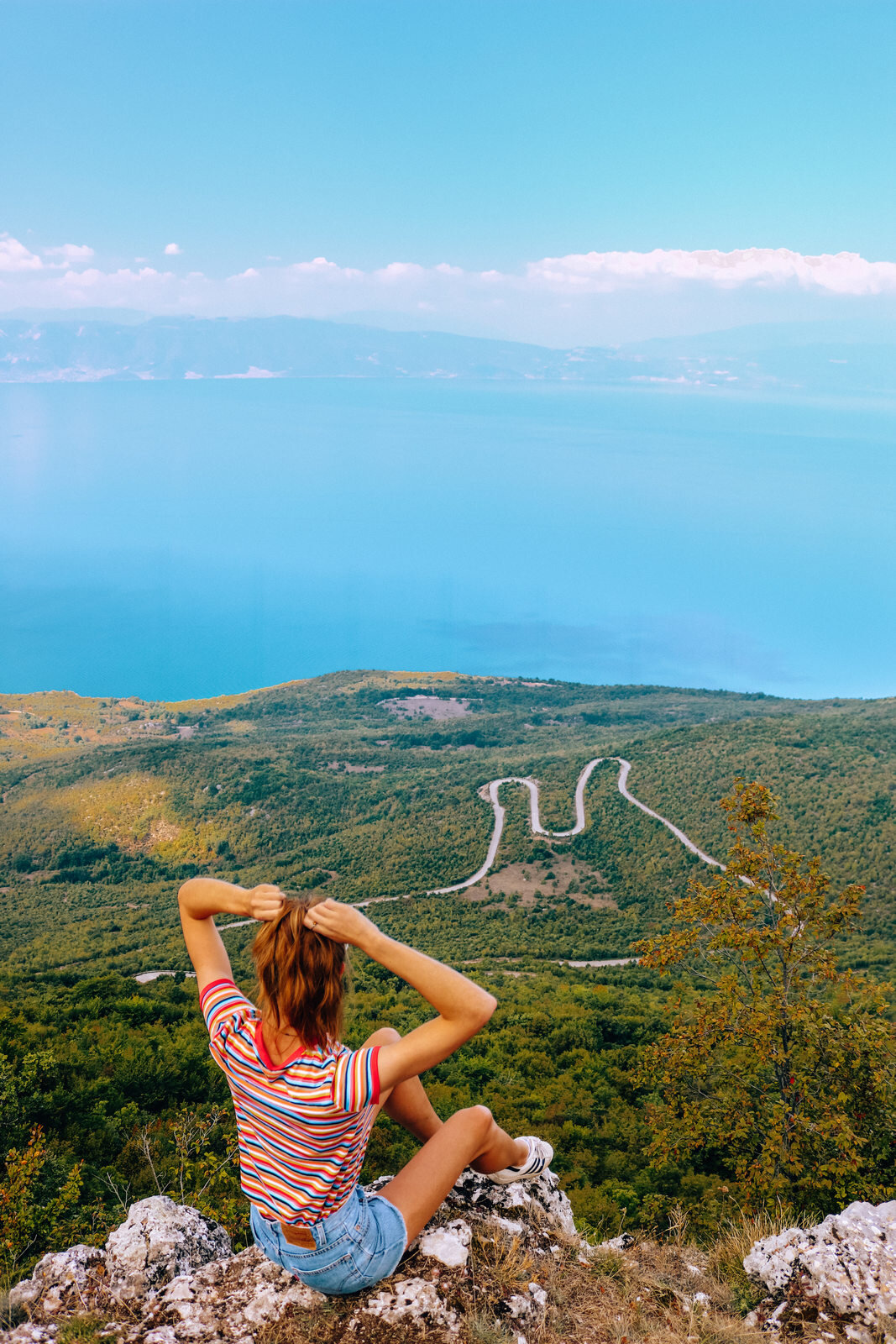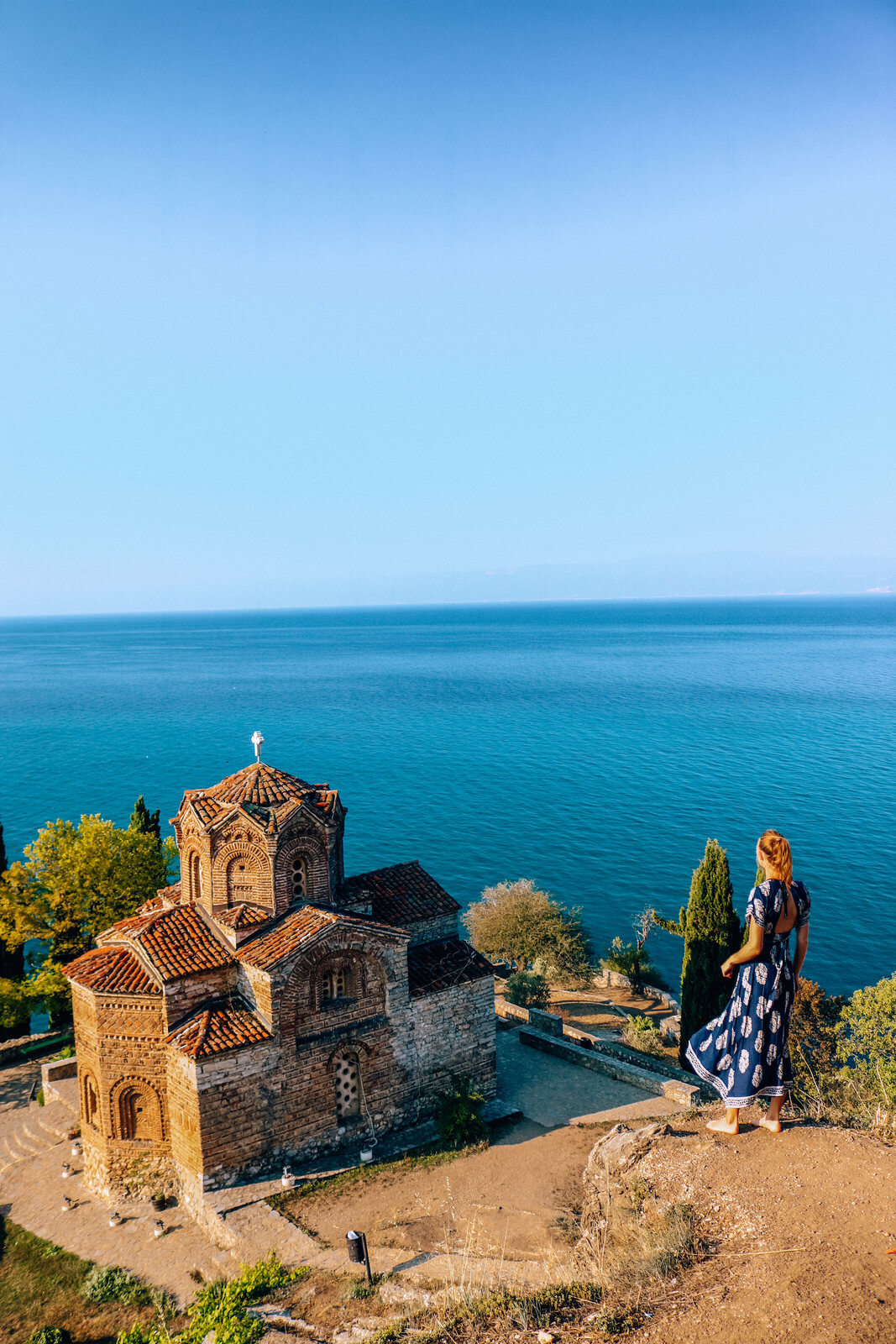Disclosure: This post may contain affiliate links, which means I may receive a commission if you click a link and purchase something. While clicking these links won't cost you anything, they will help me to keep this site up and running! Check out the full disclosure policy for more details. Thank you so much!
Road trips are my favourite way to see and explore a new place and especially in Europe when it’s so easy to hire a car and cross borders between countries. My most requested itinerary to date is the journey I did last year around 3 Balkan countries - North Macedonia (then FYROM), Greece and Albania.
While Greece is a hot destination for everyone for summer in Europe, we stuck to the north of the country to visit the beautiful Meteora and Parga. We also had a lot of concerns and questions from people about the fact that we were visiting Albania and Macedonia, particularly as there seems to be a sort of misconception about Albania that it is dangerous and has a lot of crime.
I’m pleased to confirm that at no point did we have any problems or feel unsafe during our time in any of these three countries and I would highly recommend visiting them all. Here is some quick information about each of these countries or regions:
North Macedonia
Formally the Republic of North Macedonia, this was previously state of Yugoslavia before declaring independence in September 1991 and was officially recognised by the UN in 1993 making it a very young country. The capital city is Skopje and the country is home to approximately 2 million people.
When I visited in September 2018 the country was called the Former Yugoslav Republic of Macedonia (FYROM) however this name had been imposed mostly by UN countries for ease of identification whereas the people and government of the country themselves, simply referred to themselves as Macedonia. However the name Macedonia has been disputed for many years between the country (FYROM) and the northern Macedonia region of Greece (adjacent to the border).
This dispute has reached the highest level of international tensions, involving many centuries of history and escalations which have involved the UN and western Europe and even America at certain points. While the history of the whole dispute is too long to relate here, the most important thing to note is that Greece refused to recognise the country of Macedonia as it was an insult to their Greece Macedonian people in the north.
This feeling was so strong that when we crossed the border from Macedonia into Greece in our Macedonian car, they actually stickered the Macedonian license plate with a sticker stating ‘Greece does not recognise the country of Macedonia’.
We were concerned that having a Macedonian car would create issues for us but we encountered no other problems at all. Finally, in February 2019, after many years of stalemate, the Prime Ministers of both Greece and Macedonia signed the Prespa Agreement to confirm the name change to Republic of North Macedonia, finally ending the long-standing dispute.
Greece
Greece is of course very well-known not only as a holiday destination in Europe but also for it’s tremendous role throughout ancient history, with it being considered the birthplace of western thought as we know it today, as well as other significant institutions such as the birthplace of the Olympic Games.
Evidence of of its history can be seen in it’s preserved historic sites across the country but most notably in the capital city of Athens. Greece population is approximately 11 million and is well-know for its high standards of living and quality of life.
The country has thousands of islands in the Aegean and Ionian seas, including Santorini, Mykonos, Crete and Zante. We drove only through the northern half of the country as its shared borders with Albania and North Macedonia made it extremely easy to drive around.
Parga, Greece
Albania
Tirana, Albania
Albania has such an interesting history and I was fascinated to learn about it when we did a walking tour in the capital of Tirana. Albania as it is now was formed for the first time in 1912. After the Second World War and defeat of Nazi Germany, Albania became a communist state under the dictatorship of Enver Hoxha - the People’s Socialist Republic of Albania. Under his dictatorship, the country became isolated from the international community, with negative propaganda circulated about the rest of the world and false information about how well advanced Albania was thanks to the socialist regime, compared to European and even American counterparts.
This false information alongside closed borders, travel bans and huge censorship and essentially a total media blackout meant that for almost 50 years Albanians were cut off from the advancements and benefits of trade with other countries - they had no idea what they were missing.
The revolutions of 1991 across Europe saw Enver Hoxha and his Communist Party overthrown. Albania is now rapidly catching up with the rest of the world, is a member of the UN and is also an official candidate for membership to the EU - this drive from advancement and to become part of the European community which they had previously been excluded from makes Albania extremely open and welcoming to tourists as the tourism economy is starting to rebuild.
Of course these are not all destinations that everyone would choose, but their off the beaten path location makes them even more special to explore without the crowds! Plan more trips to these unique travel destinations!
Hiring a car in the Balkans
I’m addressing this now because we initially planned to fly into Greece since flights there and car rentals were all so cheap. However car rental in Greece is actually very strict and you will struggle to find any car rental company willing to let you take the car out the country - they don’t even like you taking the car to the Greece islands/on ferries etc. Because of this difficulty we decided to fly into Skopje, Macedonia.
Car rental in North Macedonia is still very reasonably priced and they were more than happy for us to drive it out of the country for a small fee (35 euros).
To take your rental car into another country you will need a Green Card, this is a document to prove you are insured to drive the rental car into other countries and we were told we would need to present it at every border crossing. We were only asked for it at 1 of our 3 border crossings (ironically the one when we came back into Macedonia) but it is a legal document so make sure you ask for it when you collect your rental from the counter.
Find out more about my experience driving in Albania here.
Now let’s get to the fun bit!
10 day itinerary
I must say that I’m aware 10 days is not enough to do any of their countries justice, I could easily have spent more than 10 days in just one of these places but I, like many people, have limited annual leave days from my job so our (mine and my partner’s) plan was just to do and see as much as possible in the short vacation time I had available.
Day 1 - Skopje: the capital city of Macedonia
Skopje is the capital of Macedonia and like any capital city there is plenty to explore but if I’m honest there didn’t feel like there was a lot to do and I didn’t really love the city like I love other European capitals. I really do think just one day in Skopje is enough. Here are the things to see and do in a day:
The Old Bazaar - my favourite place in the city. Lots of cute cobbled streets and alleyways, i loved the vibe there, people just eating outside, eating, drinking and talking. Make sure to grab some Turkish coffee and Baklava from the stalls and watch the world go by! There are also so many interesting antique/flee market type shops, we found some cool Yugoslav era pieces and even some soviet and turkish pieces.
Old Town Brewery - located at the top of the bazaar. While it wasn’t the best brewery I’ve visited, the outdoor seating area was awesome, great atmosphere and live music for lunch.
Stone Bridge and the Macedonia Square
Art Bridge - gorgeous to photograph!
Skopje Fortress - great views of the city and free to go up. Closes at 7pm though so factor that in if you’re thinking of going for sunset!
There are several museums in Macedonia so if you’re interested in museums there’s probably one for your interests - the Macedonian Holocaust Museum, The Museum of the Macedonian Struggle, the Contemporary Art Museum and more
Not too far a drive outside of Skopje is Matka Canyon. This is well worth visiting if you have time! You can go on a boat tour or hike the canyon, the landscape is amazing with clear green water.
Old Bazaar, Skopje
Where to park in Skopje, North Macedonia
Of course it’s a road trip and the question I always ask is where can we park, what parking is available or how much does parking cost in Skopje. Well the good news is, it was very relaxed. We parked our car on the street outside our hostel and also at a car park just outside the city centre which we found on Google maps. All parking was free and people seem to abandon their cars wherever they feel like!
Where to stay in Skopje on a budget?
We stayed at Shanti Hostel for £15 per person for one night. They were very helpful and friendly and in a residential area with car parking space. Click here to book with them.
Where to eat in Skopje?
We spent most of our time snacking on baklava and turkish treats from the bazaar but honestly the best experience we had in Skopje was eating at Skopski Merak restaurant. It’s a bit of a walk from the city centre but in a lovely neighbourhood and so worth it! We had an incredible flatbread pizza-type sharer which apparently is a traditional way of baking, some amazing fried zucchini and a clay pot skopski merak - basically a big pasty pot filled with beef, pork, gravy sauce and vegetables - yum!
Day 2 - Drive from Skopje to Meteora, Greece
Google Maps says this is a 6 hour drive but we left at 8am to allow as much as time as possible for border crossing, stops for lunch and any scenic views along the way (there were lots!). Leave as early as you can so you’re not travelling in the midday and afternoon heat the whole time.
Border crossings were very straight forward, just have all your rental car documents and travel documents ready. As I mentioned above, at the Macedonia/Greece border they slapped a sticker on our rental saying they did not recognise Macedonia, with this dispute now over this shouldn’t be something you have to contend with anymore!!
Hopefully with good traffic and a quick border crossing you should arrive in Meteora mid-afternoon.
What is Meteora?
Meteora is a rock formation in northern/central Greece with six monasteries built precariously on the tops of these pillar-like rock formations. Meteora is a UNESCO world heritage site and the six (of an original 24 monasteries) are one of the most important Eastern Orthodox sites in the world.
The town nearby, at the foot of the rock formation is called Kalambaka and is most likely where your accommodation will be.
You have to pay to enter all the monasteries as this money keeps them running. The cost is 3 euros per person but this can add up quickly if you’re a couple or a family and want to visit a few monasteries, so I would advise picking one or two you would like to go inside and just observe the rest from the outside - the setting is the most spectacular part in my opinion. You will also need to cover your shoulders and knees, there are skirts available as they know a lot of people have hiked up and will not be wearing long clothing in the summer!
Sunset viewpoint in Meteora, Greece
If you’re wondering which monastery to visit in Meteora or which monasteries are worth visiting, here is my summary of each:
These are the six monasteries still remaining:
Monastery of Great Meteoron - the largest remaining. This also houses the museum for Meteora visitors. This has the biggest car park and is often the first stop of tour buses so arrive early or last thing before closing. Note that it is closed on Tuesdays and Wednesdays. Worth visiting but more expensive with the museum inside too.
Monastery of Varlaam - the second largest and with the most monks still practicing. There is a parking area just off the road here, before you reach the Great Meteoron, you can pull in and walk down the rocks for an amazing view of Varlaam and the valley below but I did not pay to go in.
Monastery of Rousanou - set lower down in the valley this is an iconic view of Meteora from the Observation Point at sunset. The locals call them sunset point 1 and 2 but if you Google Observation Decks on Google Maps, two points will come up and the view of Rousanou is one of them. If you do go for sunset, get there early as it gets busy!
Monastery of St Nicholas - this one is a bit tucked away and aside from walking past it we didn’t go inside.
Monastery of St Stephen - the furtherest monastery out on the complex and usually closes at 1.30pm. There is a connecting bridge to this monastery, making it probably the easiest to access so I would recommend this one for those with younger children or mobility issues.
Monastery of the Holy Trinity - possibly the most iconic monastery in Meteora. This is perched on a rock with seemingly no access. There is actually a pully carriage across the huge drop which monks use to commute back and forth. For members of the public you must park at the car park and walk up 140 stairs joined to the side of the rock. I did go inside this one but the stairs are tough in the height of summer so might not be for everyone!
Where to park in Meteora?
The great thing about having your own car in Meteora is that you’re not dependent on the bus service and you can beat the tour buses! You can drive easily between all the monasteries and there are plenty of car parks either at the bigger monasteries or pull ins and laybys on the road side - just take it slow as the roads are windy. Again, you do not need to pay for any parking.
Where to park in Kalabaka, Greece?
If you’re staying overnight in the area then you’ll most likely be staying in Kalabaka. Again parking was very easy and relaxed, our hostel helped us find a space but we parked on the road, there were no time limits and no payment required. If in doubt, as your accommodation about parking!
Where to stay in Meteora /Kalabaka?
Observation view point
We stayed in a great, modern hostel in Kalabaka, it even had sleeping pods so it was a great night sleep! And amazing balcony views too. Meteora Central Hostel is on the main street in Kalabaka and cost £32 per night per person.
Where to eat in Kalabaka?
I’m not usually one to recommend food places as I think everyone has their own tastes but this place was so amazing that it made us stay in Greece an extra night! Restaurant Meteora, located just by the roundabout on the main Trikalon road had the best Greek salad I’ve ever had in my life!
Day 3: Hiking in Meteora
Obviously having a car and the good road access in Meteora might mean you’re happy to explore by car and see Meteora relatively quickly. However if you’ve got time then a great way to see Meteora is to explore on foot. There are some amazing hiking trails and while you can go as part of a guided tour or walking group, it really isn’t necessary. Click here to download the official map of Meteora with all the hiking trails on or head to their website to claim the download.
Day 4: Parga to experience the Greek coast
Driving to Parga was the decision we made after having the great Greek salad and we’re so glad we did! We wanted to experience the famous Greek coastline but without going too far out of our way, so driving to the west coast made perfect sense as we would be following that road later anyway to cross into Albania.
The drive from Meteora to Parga is 4 hours according to Google Maps but the route is windy and often single-track so you can get stuck behind slow traffic. We left first thing in the morning and arrived mid-afternoon, so we still had the afternoon and evening to explore the beautiful town and see sunset of course!
Where to stay in Parga, Greece?
We actually booked this accommodation in the car while we were driving to Parga! And to this day it is the best find I’ve ever made on booking.com. Martha’s Studio is a beautiful top floor apartment with a full balcony overlooking the bay of Parga. The owners were lovely and welcomed us for coffee and a chat every time we saw them. We only wished we could have stayed longer! It only cost us 60 euros for the night for the entire place, you can book here!
Read more about our stay in Parga.
View of Parga, Greece
Where to park in Parga?
The roads are very windy and narrow, our hosts showed us a carpark at the end of the street that residents can use to park. If you’re staying in a hotel they usually had onsite parking.
Day 5: A Day in Parga
What to see and do in Parga?
Parga is relatively small and while you could probably spend a few days relaxing on the beaches in the area, we aren’t big fans of being on the beach. So here is my list of what to see and do in Parga.
Explore Parga Castle - there are some really cool ruins you can go inside and also so amazing views over Valtos Beach.
Spent time at any of the three beaches in Parga - Krioneri, Piso Krioneri and Valtos. Al the beaches have sunbeds and parasols which you can rent, they do get very busy though so arrive early!
The Old Town in Parga is the beautiful colourful, winding streets and alleyways between the waterfront and the castle at the top of the hill. There are lots of cute shops, boutiques, souvenirs and of course, ice cream!!
Take a boat trip. Even with just a day in Parga you could take a half day boat tour along the coast and the surrounding islands. We tried to do this but unfortunately winds were too high (that’s what you get for travelling in the shoulder season). But there were so many options for boat rentals and tours along the beach front that you really are spoilt for choice. Also did you know that you don’t need any kind of special licence to drive a boat in Greece? If you’re in a group of a family you can actually hire the boat yourself and take it off for a day or half day somewhere. Paxos and Antipaxos are the most popular boat trip to take for the day.
Of course if you have a car then you’re free to drive elsewhere too, there are some beautiful beaches such as Ai Giannakis or Sarakino which are only a 20 minute drive from Parga.
Where to eat in Parga?
We ate at Taverna Stefanos where we had some incredibly fresh seafood accompanied by an incredible view over the Valtos beach bay for sunset. The Greek salad wasn’t as good as our one in Meteora though!!
Day 6: Drive into Albania - Butrint National Park and Ksamil
Now we kick off our Albania road trip itinerary!
The drive from Parga to Butrint National Park in Albania only took about 3 hours with the border crossing included - which again was very straightforward. In fact the most confusing part was arriving at the river crossing to get into Butrint and realising we had to drive the car onto a small platform which was a chain ferry operated by an Albanian man with no English who pretty much rips you off for the cost of transporting you 20 metres across a river - but oh well!!
Butrint National Park, Albania
Butrint National Park is in fact a UNESCO World Heritage Site due to the incredible archeological significance, the site contains artefacts and structures from as early as the Iron Age and while some of the site is not as preserved as you may have perhaps seen in Greece or Italy, the authenticity and ability to wander between the ruins without barriers or restriction is really a unique experience and a huge perk of Albania not yet being overrun by tourists.
You could easily spend a large part of your day here as the site is huge, there is lots of information and signs are all in English too. The surrounding marsh, lake and wetlands have also been designated as protected areas for the huge ecosystem and number of species supported there.
The cost to get into Butrint is very cheap, approximately 700lek (5 euros) but we arrived on a Wednesday and discovered it was free entry that day - even better!!
Butrint National Park
Where to park in Butrint National Park?
There is a car park right outside the entrance to the archaeological site which is free.
Ksamil
The islands of Ksamil also come under the protected area of Butrint National Park. The water is clear and blue and your can only access the islands by boat or occasionally by a small stretch of sand. However Ksamil beach and the resort area there were extremely busy, loud and not particularly enjoyable for us, even in early September when we had supposedly just missed the peak season.
While it is beautiful, we decided to continue on up the coast where we knew we would find some more secluded beaches. These were or favourites we either visited or were told to visit by locals:
Krorëza Beach - you can hike down or arrive here by boat. A few small boat trips come here but it is a pretty much untouched beach with beautiful clear water and white sand.
Lukove Beach - we were actually recommended to go here when our plan was to camp. the campsite here on Lukove Beach is the dream for anyone who wants to experience beach camping. Beach camping is not allowed in Albania unless in specifically designated sites like this one.
Jali Beach is part of Jala town so very easily accessed from the road and an easier option for those not able to hike down to secluded beaches, with small children or mobility issues. It seemed to be a much quieter option than the resorts of Ksamil or Sarandë. There is also a campsite on this beach
Gjipe Beach - our favourite beach! This is definitely not the most easy to access. There is a car park at the top where you have to pay the attendant a small fee. Then you can walk down an unpaved coastal track - DO NOT drive your vehicle down here, it is suitable only for off-road equipped vehicles. Wear good shoes, the ground is slippy and uneven and the climb can be tough in the heat so do it earlier in the day. The alternative is to walk through a dried riverbed canyon which is flatter but takes longer and brings you right out onto the beach too.
Gjipe is beautiful and secluded with clear water great for swimming in. There is a small bar there selling food and drink but I’d advise taking your own. There is also a campsite here where you’ll find loads of off road vehicles who have come down the track. Some boat trips also stop here too.
Where to stay on the Albanian coast?
If you’re a family or big group Ksamil or Sarandë would be great options to stay in and they’re both big enough towns with plenty of food and accommodation options and good road links. We stayed in Himarë, about an hour and a half further north up the coast. There wasn’t a huge amount going on there but we found a cheap Airbnb and it gave us a good starting point to go from the next day on our drive to Berat.
Day 7: Berat - the town of a thousand windows
Berat, town of a thousand windows
Berat was easily one of our favourite stops on our entire trip. This beautiful city with white Ottoman houses built into the hillside is protected by UNESCO and has been in existence for over 2000 years. Nestled between the mountains, this town is so full of character we wished we had longer than one day and one night here. Here are a list of things to see and do in Berat:
Berat Castle - another fortress on a hill but so worth it for the views, especially in the morning or evening when the sun is low over the valley.
Gorica Bridge - you’ll get the best views of the traditional Ottoman houses if you take a walk across this bridge and along the river path on the other side.
The Ethnographic Museum - has artefacts from Berat’s history
Walk through the old Ottoman houses and streets - we discovered some beautiful antique and market stalls selling old Albanian trinkets.
Where to stay in Berat?
We stayed at Guesthouse Arben Elezi. Again this is another accommodation we booked in the car on the way to Berat and it was a perfect mix of modern and traditional Albanian, with a very modern room and fixtures but a traditional Albanian welcome with a rooftop restaurant and an incredible traditional breakfast included in the price! The cost was only £27 for a private room and ensuite and the view from the rood over the traditional Ottoman houses was unbelievable! Click here to book!
Or read my full breakdown of accommodation in Berat here.
Where to park in Berat?
Streets in the old town Ottoman housing are very narrow, our host at the Guesthouse provided us with a parking space on the property. If you’re in the main town then there is a lot of on street parking for free.
Where to eat in Berat?
We were looking for traditional Albanian cuisine and our host kindly recommended a restaurant just on the other side of the Gorica bridge called Antigoni. They have a wonderful outdoor deck space and great local beers. We had two lovely vegetarian dishes there although I have to say we did not rate the Albanian cheeses which we tried a platter of!!
Day 8: Tirana
Berat is the perfect stopping point on your way to Tirana as the capital of Albania is only 1.5 hours further north and mostly on the country’s only motorway/highway - the A3.
Tirana was such a pleasant surprise for a capital city. It didn’t feel overwhelming and too busy, but it felt young and vibrant with so many interesting things going on. If you have the opportunity to stay longer I would definitely recommend you do and discover the best things to do in Tirana!
View of Tirana from the Sky Bar
How to spend a day in Tirana?
A free walking tour. I cannot recommend this enough. I love to do walking tours, especially in new European cities I visit because it’s a great way to get to know the city quickly and they’re usually run by a young local resident so you’re getting the best information and lots of local tips too.
This walking tour was run by a Tirana resident who was also studying at the university. His dad had been part of the communist government when Enver Hoxha was in power. He as so informative about Albania’s history, growing up as Albania transitioned away from the Communist era and about how the older generations (his parents) transitioned having spent most of their lives under one regime. I’ve never been moved to tears on a walking tour until this one!
It was incredible informative and i cannot recommend enough. I suggest taking the 9am or the 4pm tours as the heat in the middle of the day is not bearable for 3 hours of walking.
Pyramid of Albania - this famous structure in the city was formerly a museum to Enver Hoxha opened in 1988 by his daughter, Pranvera Hoxha, after her father’s death. After the collapse of the Communist regime the museum was closed and has since been used as a conference centre, exhibition centre, a NATO base and a broadcasting centre. It now stands abandoned and graffitied but it was announced in 2017 that it would be refurbished. In late 2018 when i visited it was still abandoned.
BunkArt and BunkArt 2 - these are both two super cool museums in converted nuclear bomb shelters. They house history and contemporary art. BunkArt is outside the city but BunkArt 2 is right in the centre.
Skanderbeg Square - the main square in Albania and named after a national hero of Albania. This square is huge and surrounded by most of the important buildings in Albania. It’s also an area that people come to hang out in the evenings after work, especially when it gets cooler.
National Museum of History - if you have time this is the largest museum of Albanian history.
Sky Tower - a bar with amazing views over the city. We just went up for the view and didn’t even have to buy a drink. You can just walk around the balcony area.
Pazari i Ri - this is a really cool outdoor area with bars, shops and restaurants which especially comes alive with young people, market stalls and music in the early evening.
Make sure to check out all the colourful buildings in the city. Why is Tirana so colourful? Well this is one of my favourite stories! After the grey communist structures that dominated the city in the 20th century, young politician and artist, Edi Rama became the mayor of Tirana. He realised that by transforming how the city looked he could make its residents proud to live there, in turn this would reduce crime rates, vandalism, littering and graffiti. So he painted lots of the city in vibrant and colourful patterns and colours. This still continues today and Edi Rama is now the Prime Minister of Albania.
Where to stay in Tirana?
You can find the full guide to where to stay in Tirana here along with other accommodation options we considered.
We stayed in a super cool hostel near the vibrant Pazari i Ri area i mentioned above. The hostel was called Milingona City Center Hostel and we booked a private room for just £17 a night! It has a lovely laid back outdoor area, private parking, breakfast included and colourful decor. Click here to book.
Where to park in Tirana?
Our hostel had private parking so we left our car there for our stay. The next morning we did drive into the city but finding parking was not as straightforward as other cities had been. We left in on a side street for a whole but didn’t want to leave it for too long! If you can leave it at your accommodation then I would suggest that.
Day 9: Breakfast in Tirana, drive to Lake Ohrid in North Macedonia
After getting a lovely traditional breakfast at our accommodation, we went out early to photograph the city before it got busy. The we got back on the road to drive to Lake Ohrid back in North Macedonia.
The drive from Tirana to Lake Ohrid is about 2.5 hours but this was the only border we had some trouble at. I’m not sure why by Taylor thinks it’s because I asked for a stamp (I just wanted an Albania passport stamp). Anyway they took us inside a check point building and our car and all our belongings were thoroughly checked over. Everything was fine and they let us go, I did not get a stamp sadly.
Lake Ohrid actually straddles both Albania and Northern Macedonia, it’s a huge lake and a beautiful drive in, with the town of Ohrid sitting on it’s north shore. Ohrid town itself is pretty small but there is a lot to do in terms of activities so you could easily spend a week vacation here.
What to see and do in Ohrid and around Lake Ohrid?
View of Lake Ohrid
beaches along the lake side - especially if you have a car and can drive further around the east shore.
water activities - boat trips, water parks and inflatable courses, wind surfing, swimming, snorkelling, water polo, fishing
hiking - numerous hikes of varying difficulties. Check out the various trails here.
History - visit the numerous churches along the north shore within walking distance from Ohrid town, including the famous St John’s Church, St Sophia, Saints Clement and Panteleimon. If you’re walking in this area you’ll also find the amazing Ancient Theatre where performances are sometimes held.
Drive the winding roads up through National Park Galichica for some amazing views and visit the neighbouring Prespa Lake. The viewpoint from the top to see the swtichbacks below is amazing. There is a small fee payable at the entrance to the road, it seemed very unofficial but it was only a couple of euros.
Explore the markets and bazaar. Ohrid was much more touristy than Skopje and some of the shops were not particularly appealing. But we did find some awesome antique stores and trinket shops in the main town area.
Where to stay in Ohrid?
We were there for my birthday (coincidentally also the National Independence Day for Macedonia - 8th September) so we decided to splash out on a lake view room and were pleasantly surprised how cheap it was - only 55 euros for an apartment on the main square with a balcony and lake view, plus breakfast was included and discounts on the cafe downstairs. The place was called Studios Darija - City Square and also gave with private underground parking in a parking garages a couple of streets away which the host showed us too. The host was extremely friendly - welcoming us with welcome shots of Macedonian Rakija in the cafe downstairs! Click here to book with them.
Day 10: one day in Ohrid
St John's Church overlooking Lake Ohrid, North Macedonia
Of course there’s a full list above of all your options for a vacation to Ohrid but here is our one day itinerary which we did on our last day of our road trip.
Early morning walk to the main square then turn right along the water front, if you reach Saint Sophia Church, turn left towards the water and there is a wooden promenade to walk along which is beautiful and peaceful.
Continue along this path to reach St John the Theologian Church - this iconic church gets super busy later in the day so snap some photos before 10am when it’s quieter.
Walk up the hill where you’re reach several view points over the lake and eventually the Samuel’s Fortress.
From the fortress walk back down through the beautiful streets of the Old Town, you’ll see the Ancient Theatre too.
Back in the main town head towards the Piazza della Fontana to check out all the small art shops and souvenir stores.
Grab brunch at one of the waterfront cafe’s on the main square or along Kosta Abras.
Next hop back in the car and drive along the east shore of the lake. There are plenty of stopping points!
Drive up the mountains through National Park Galichica, you will have to pay a small fee to drive up the road - P504. The road is fully paved and easy to drive, you can hike it too but it’s very steep! From the top you can see three countries on a clear day - Macedonia, Greece and Albania!
Lake Prespa is also a scenic drive but a bit much to do in one day!
In the afternoon, back at Ohrid head out on a boat tour or if you’re there in summer, swim off one of the jetties around the shore. Your accommodation will be able to recommend you a tour. Lots were closed the day we were there due to the National Day so we walked along the shore and took a picnic instead.
Where to eat in Ohrid?
We had lots of small snack meals in the cafes along the front and in the square, particularly Caffe Galerija. We also had a lovely lunch at Alexandrija along the water edge. We had one evening meal at Porta restaurant which was very disappointing, very slow service, fod was cold you you get hassled a lot by people coming into the restaurant begging for money.
Ohrid airport (St. Paul the Apostle Airport)
Ohrid airport is only 15 minutes outside of Ohrid and very easy to get to. It’s also one of the smallest and most poorly equipped airports I’ve ever flown from so don’t arrive super early if you don’t need to! The car rental returns are just small huts in the car park, there wasn’t even anyone there so we just dropped out keys in the post box and left them a message!
The one way fee for returning our car elsewhere (but still within Macedonia) was fairly cheap so I’s say it’s well worth doing. Driving back up north to Skopje just to return the car would have been a waste of a day!
And there you have it, a 10 day road trip itinerary for North Macedonia, Albania and Greece! I hope you have found this useful, please leave a comment if you’ve used any of these tips or if you’re planning a similar trip some time soon, I’d love to hear about it!
Like it? Pin it!
Flights: I use Expedia to find great flights and the best deals all over the world, they have regular sales and offers so I always check their website. I also check CheapOair to find cheap deals on round trip flights.
Car Rental: I love the customer service I've always gotten and the variety of options with Rental Cars. But for short notice rentals, I've been using Expedia for the last year, they always seem to have great one-day rates or last-minute rates from the main rental companies.
Accommodation: I prefer the flexibility of booking accommodation with Booking.com so I can cancel or change my reservation without a fee or only pay on arrival for most properties. For longer or more unique stays I prefer AirBnB because you can get the long stay discount, you can also find more unique properties and book experiences with talented locals and businesses. For my budget trips, I always stay in hostels and book through Hostelworld because they have great guarantees if anything does go wrong. If you arrive and your booking is not at the property, they refund the full deposit AND give you $50 extra credit.
Tours and organised trips Although I don’t use tours that often, I do like to book local experiences or day trips once I reach my destination. For that I use GetYourGuide because it has the biggest selection and variety of tour and experience options.
Travel Insurance: I currently use SafetyWing Nomad Insurance. Which allows me to pay a rolling monthly fee to cover my long term travels.
My camera gear and equipment: I use a Canon 77D with an 18-135mm lens or a 50mm lens. And a DJI Mavic Mini Drone. For all my gear including laptops, tripods and more camera accessories read my travel photography gear guide.
